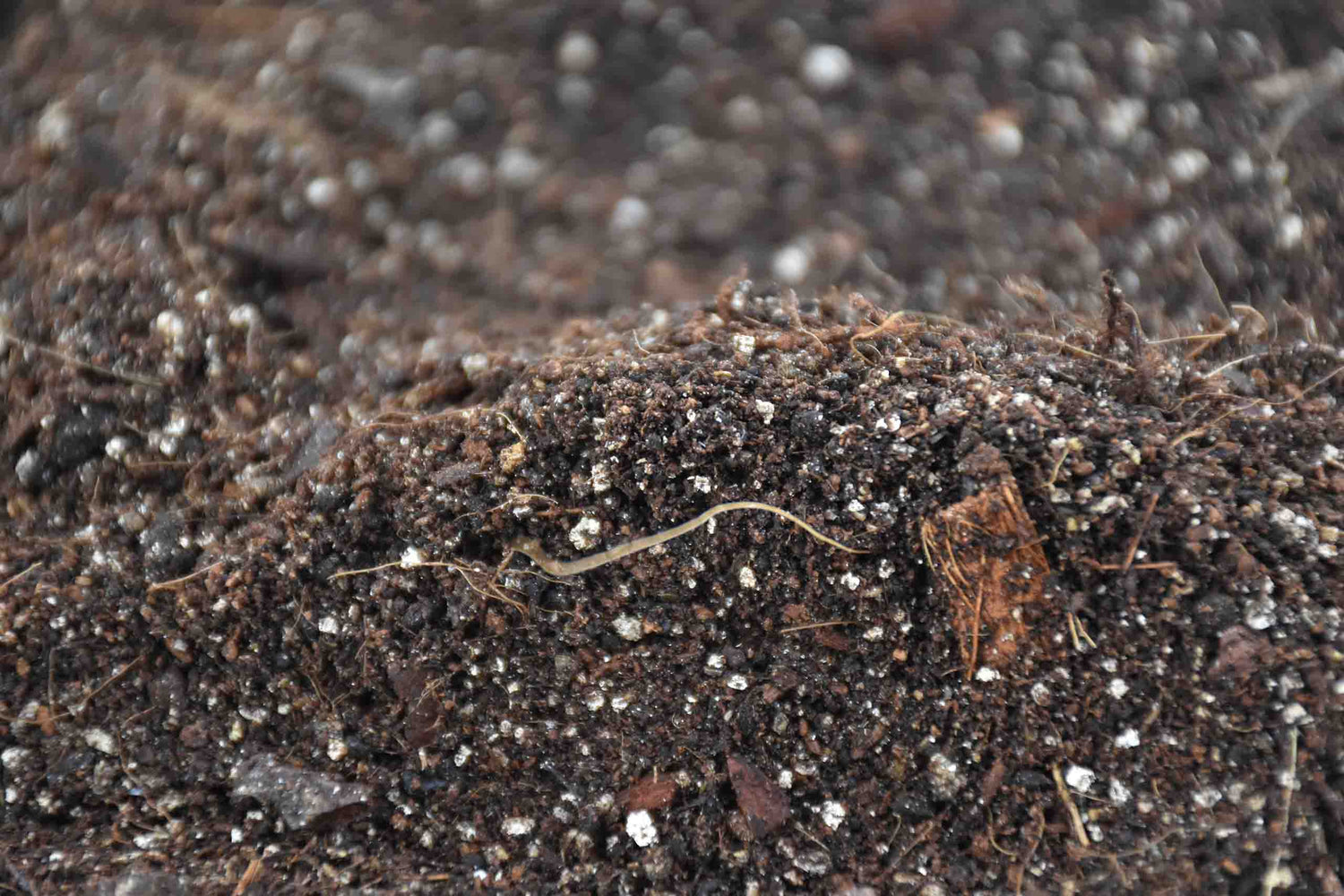
SYBASoil: Premium Soil Mixes
Handmixed coconut-based soil blends for your plants. Give your plants the soil...

Handmixed coconut-based soil blends for your plants. Give your plants the soil...
€0,00 EUR
Order before 16:30 on working days = Shipped today
The expert in soil
100% Satisfaction Guarantee
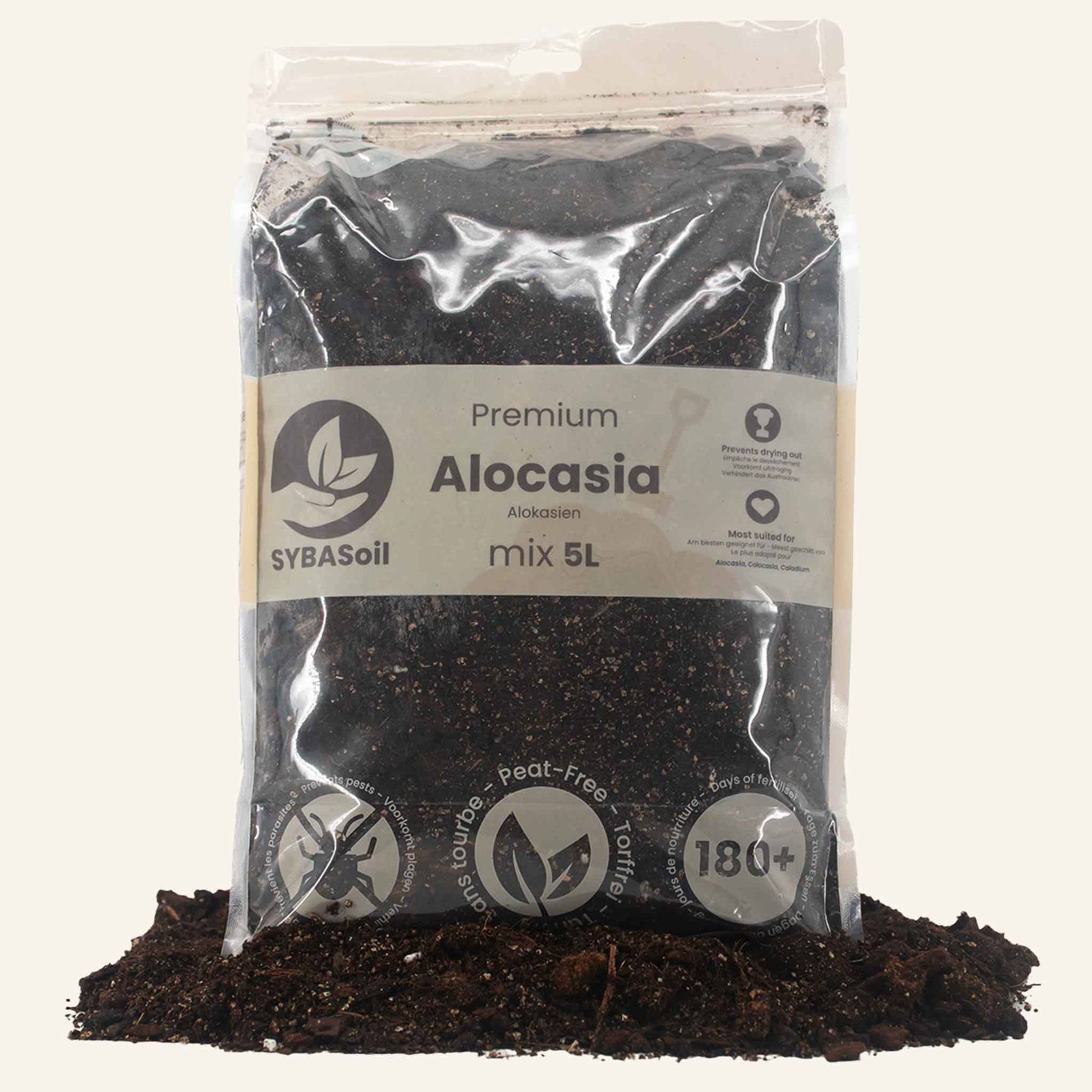
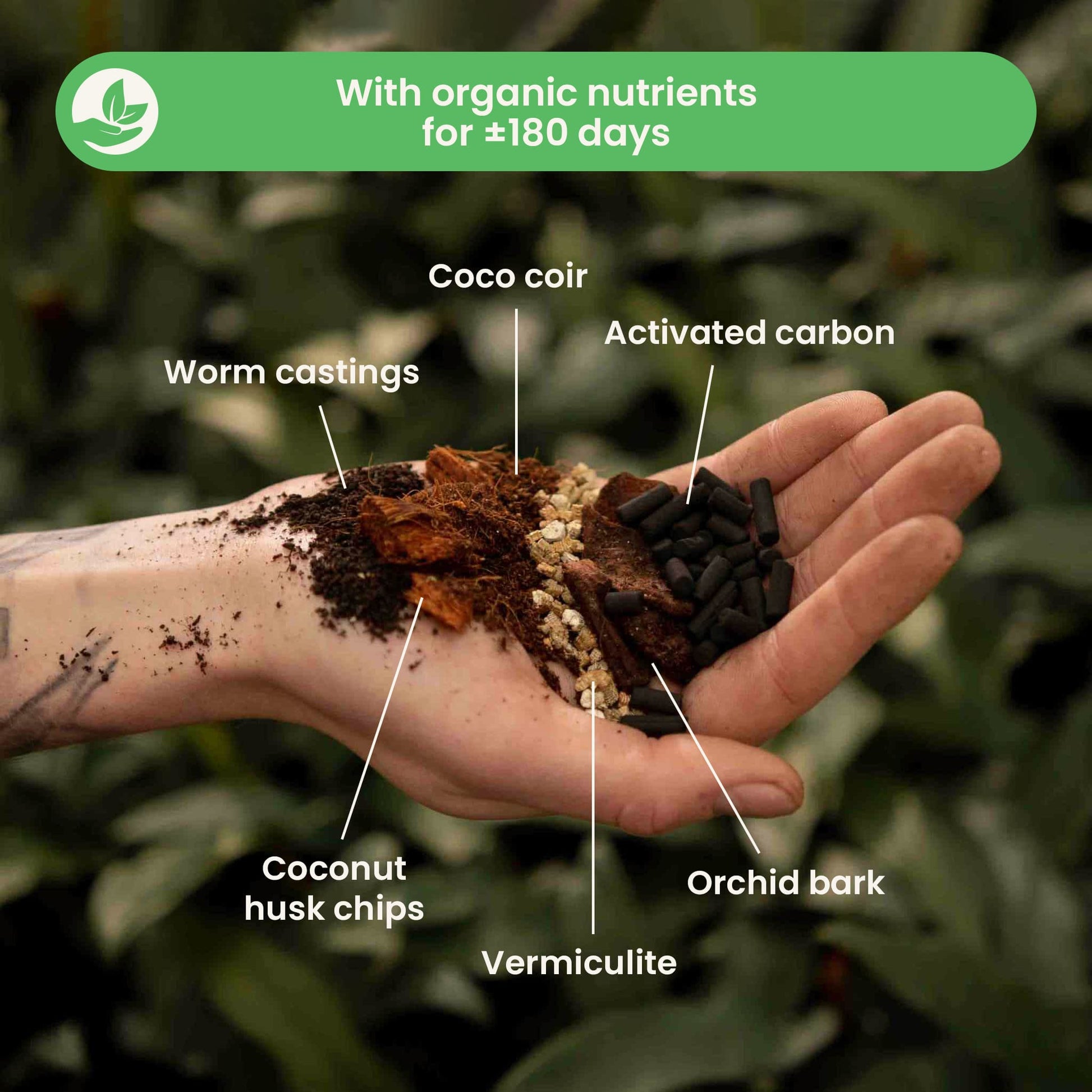
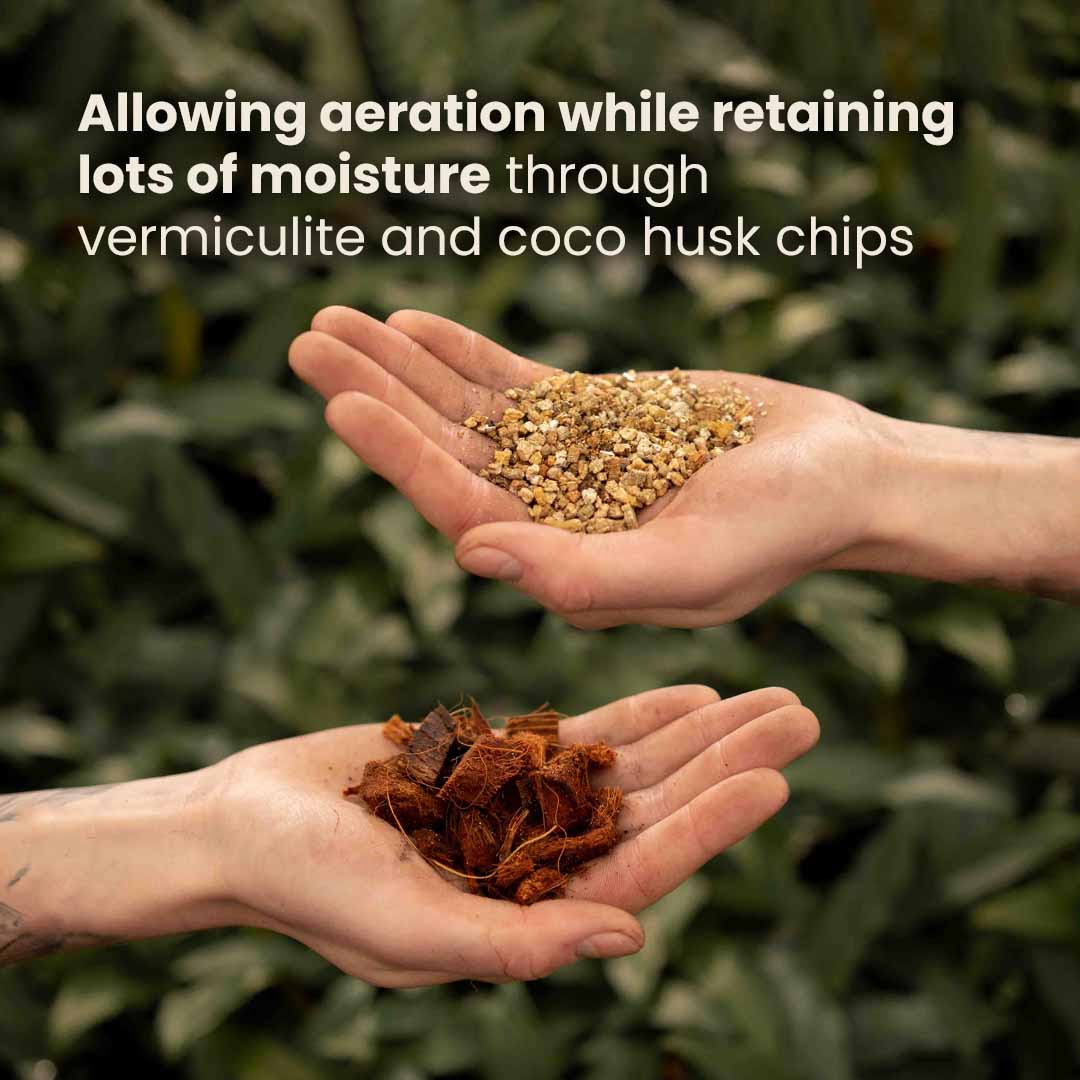
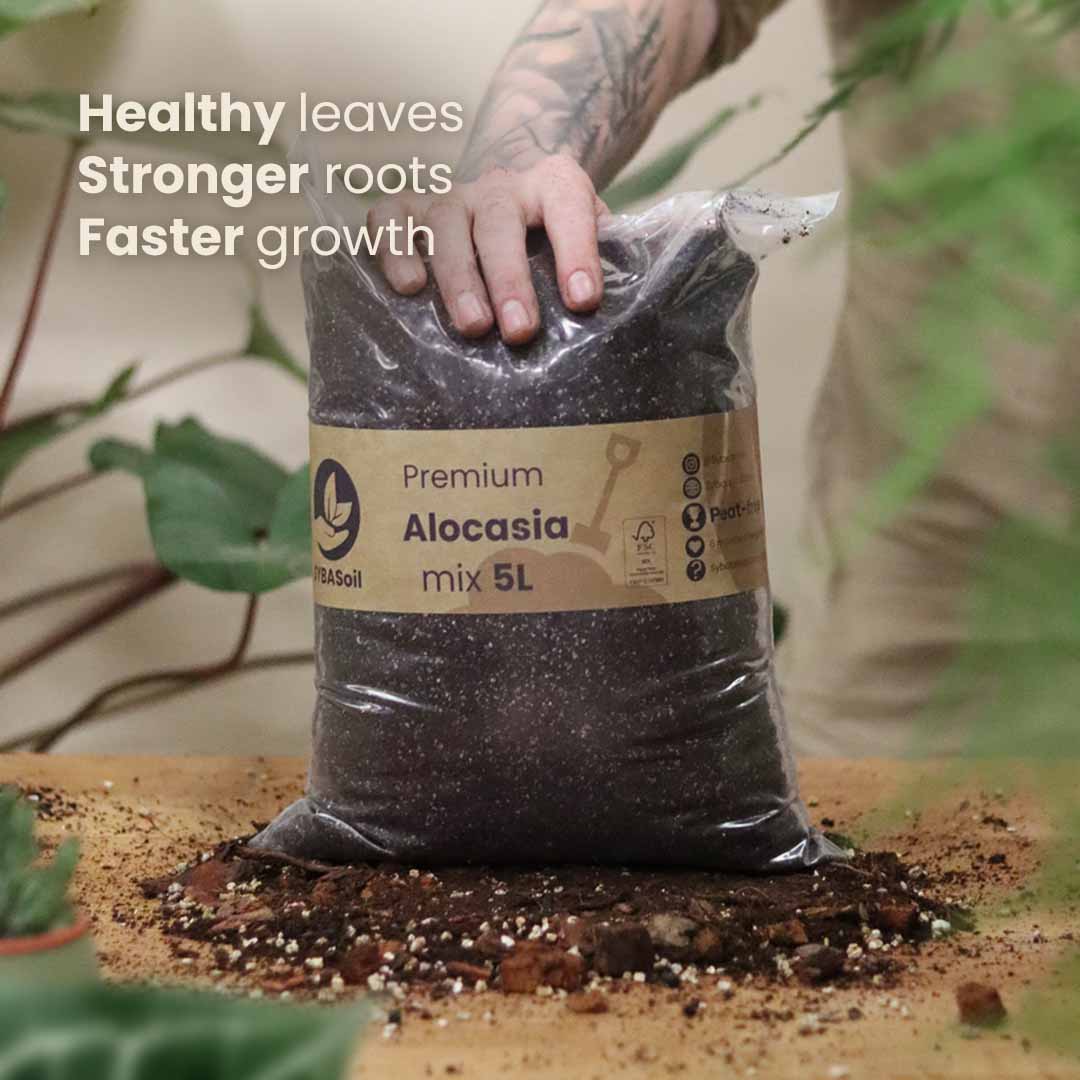
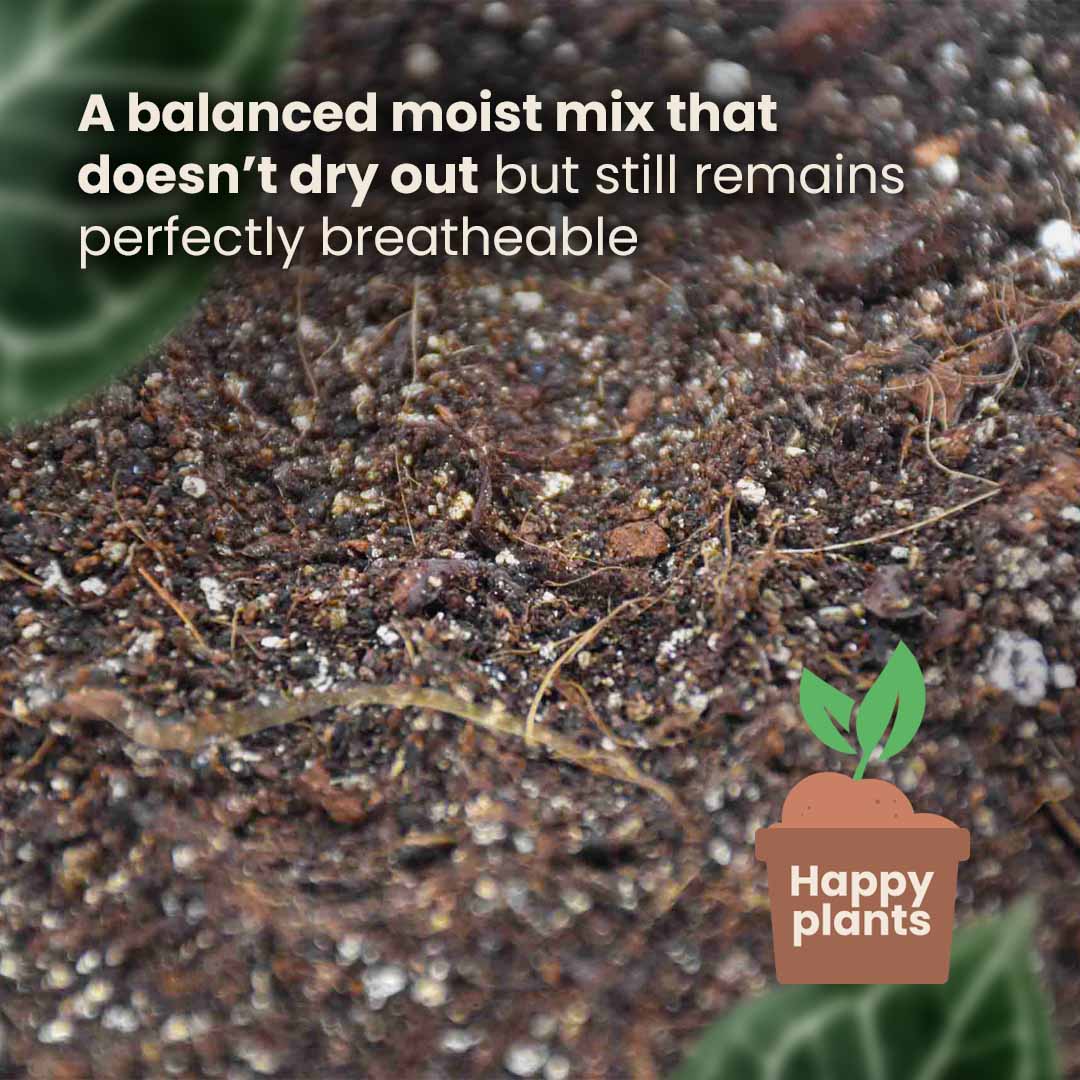
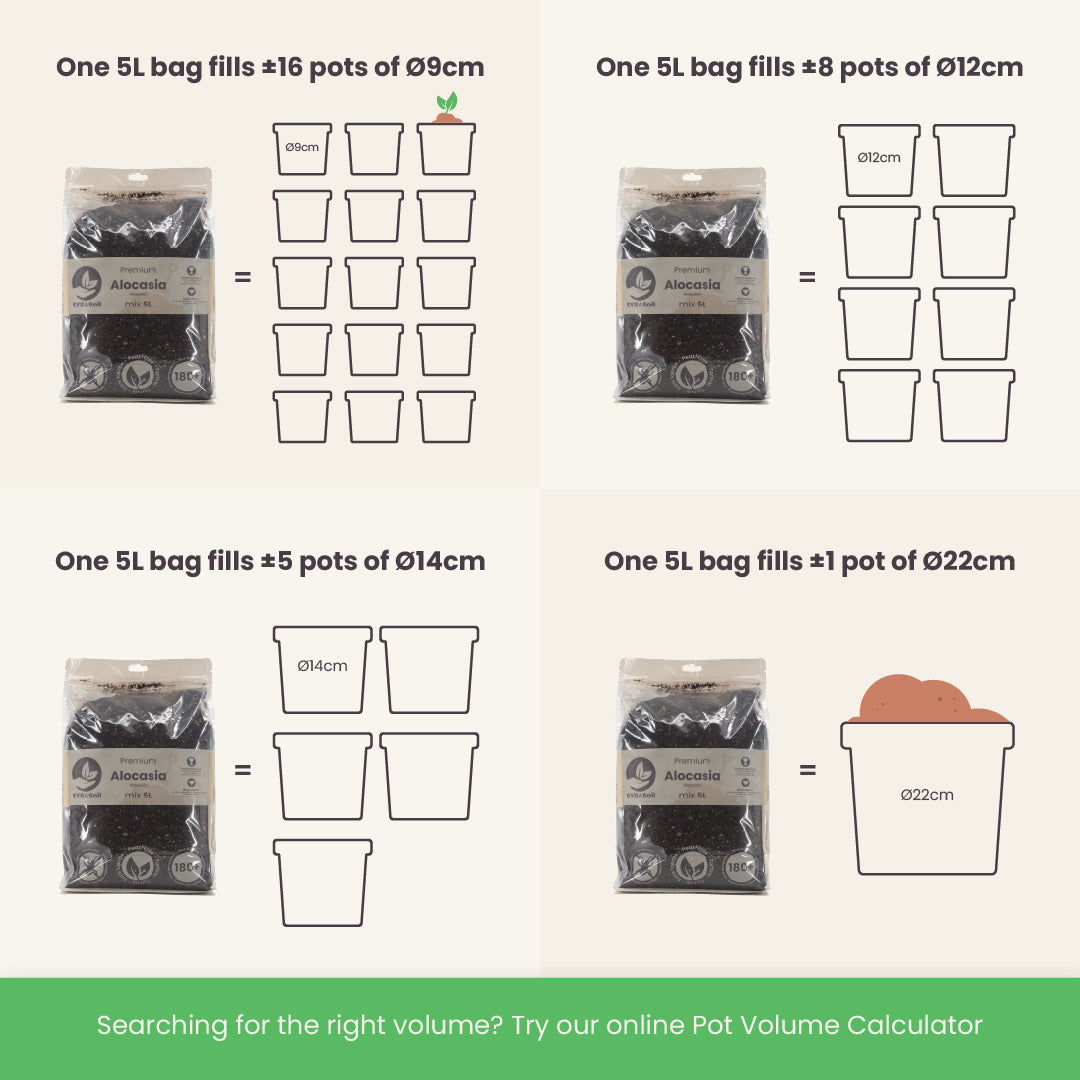
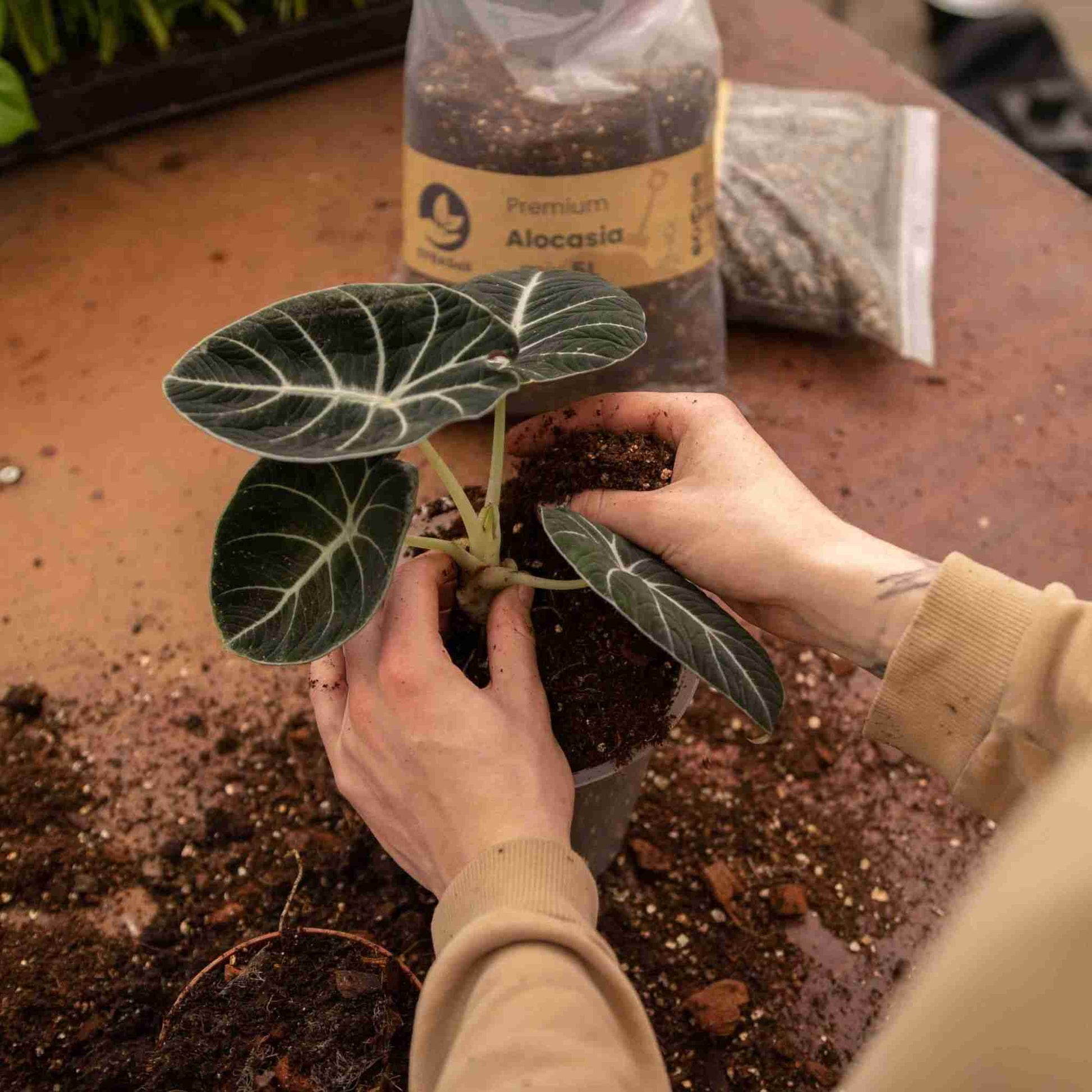
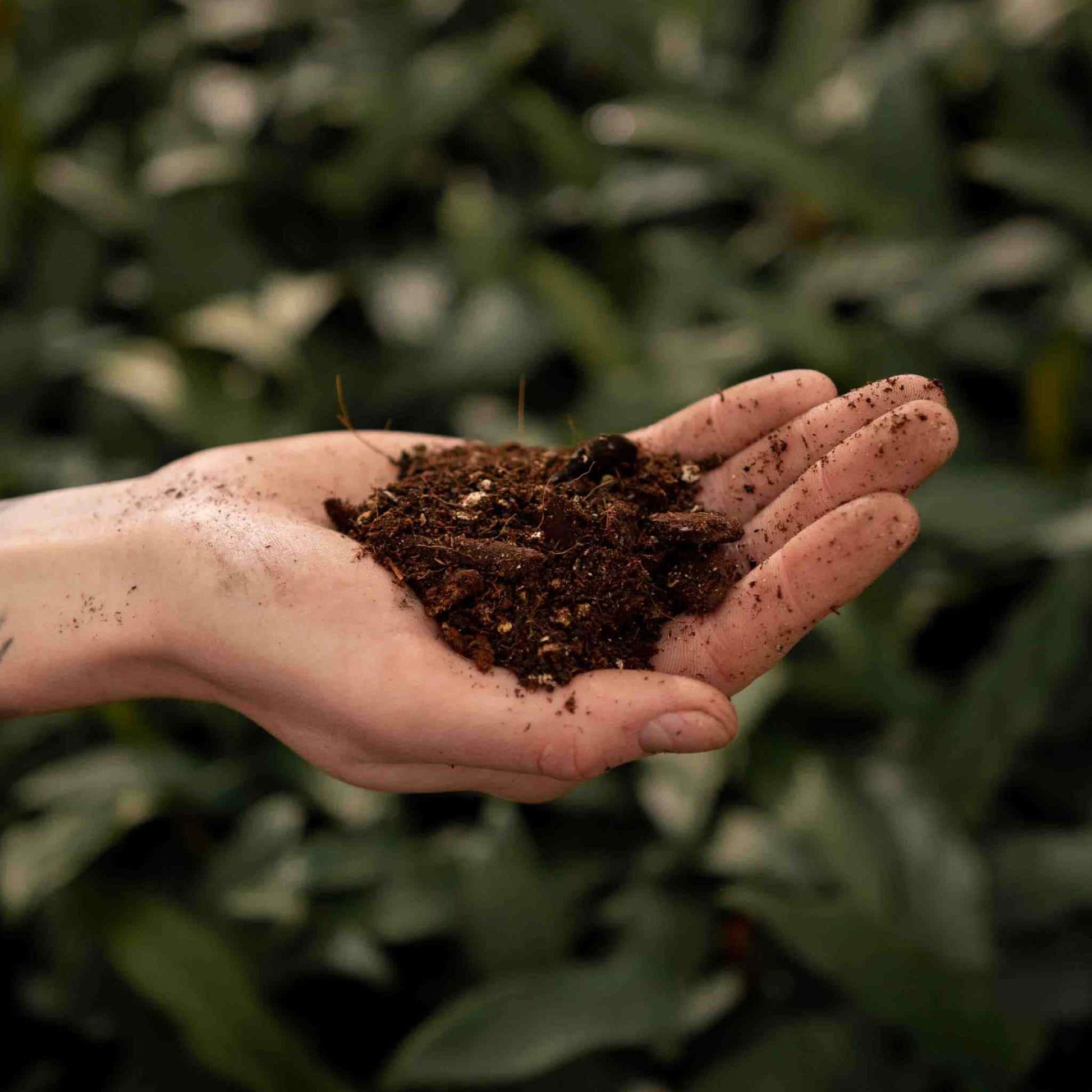
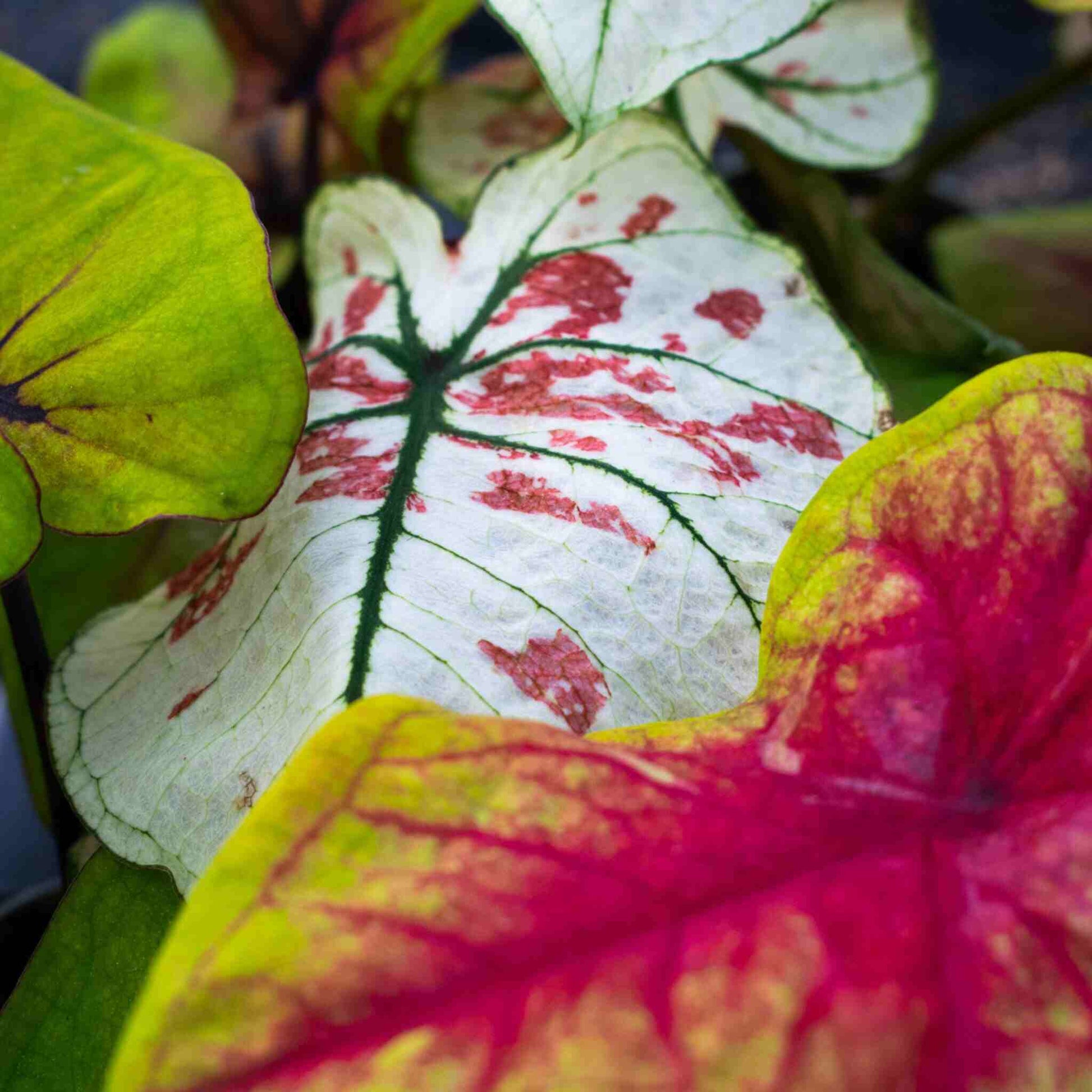
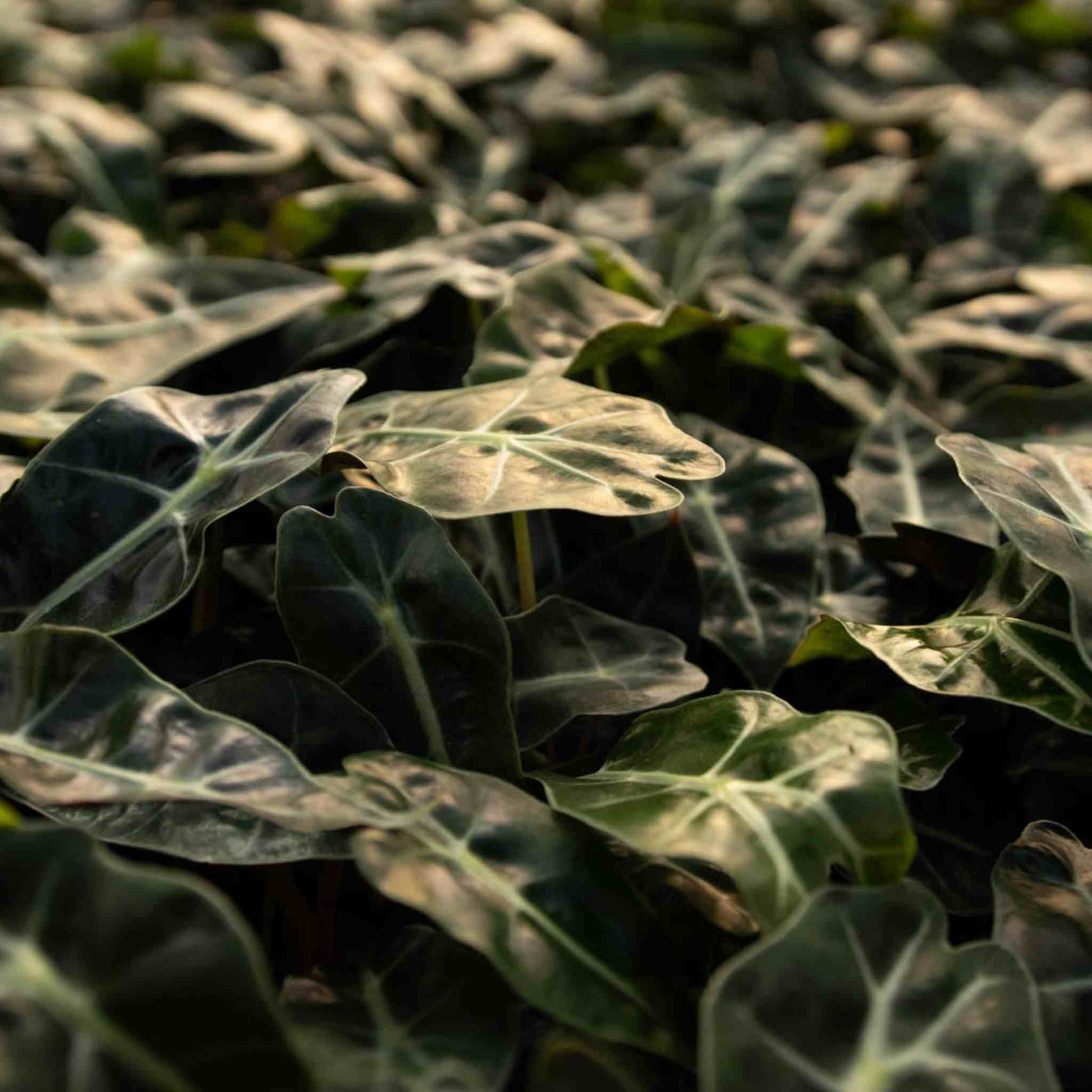
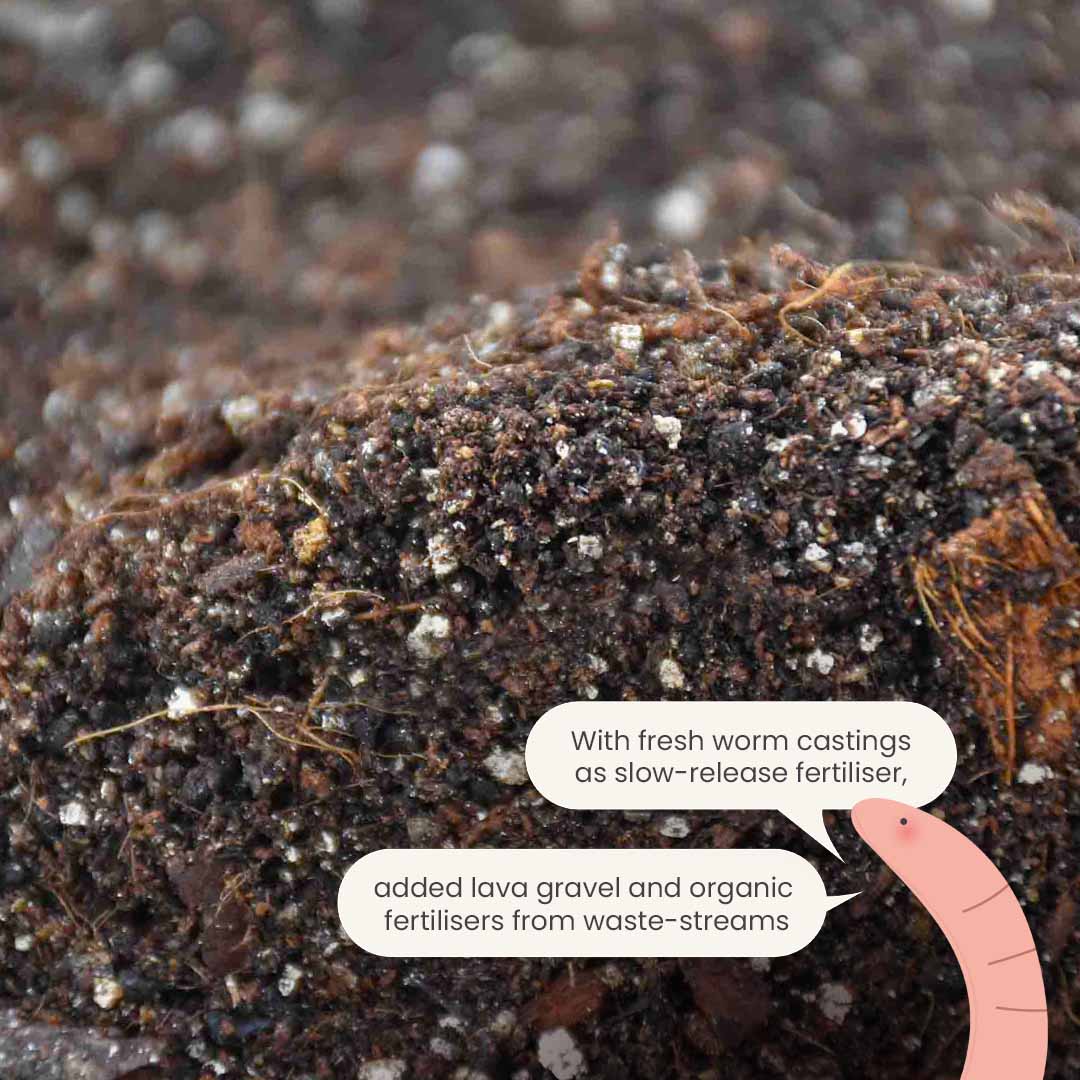
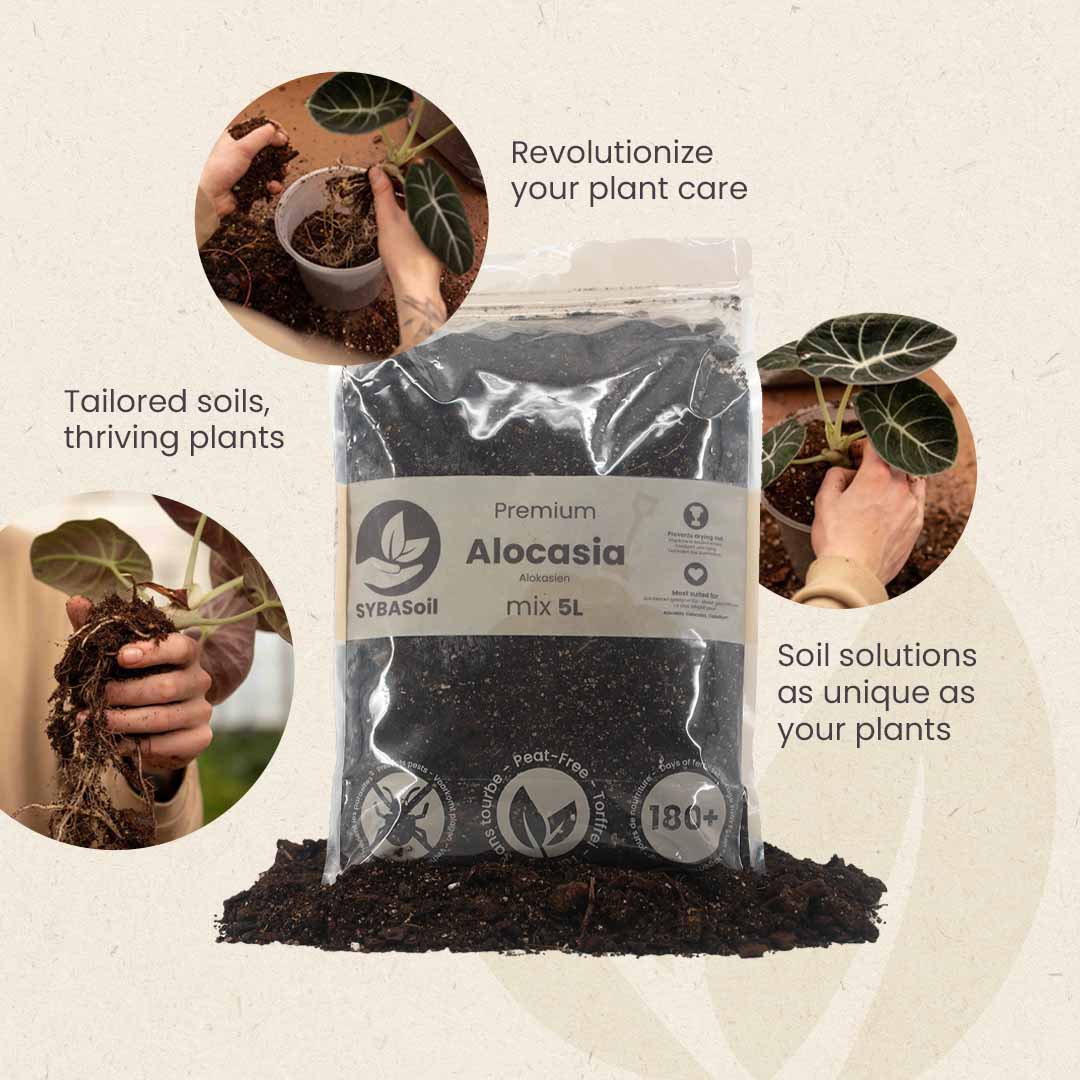
Using the mix is easy! start with removing as much of the old soil as possible. Gently squeeze the pot while holding it sideways to loosen up the plant. Run the roots under lukewarm tap water to remove the last pieces and bits.
Also, make sure to remove any dead foliage that may still be on the plant using scissors. Now your plant is ready for its fresh Alocasia soil. Add a small layer of Alocasia mix at the bottom of the pot.
Place the plant in the pot, and slowly add Alocasia soil to the sides to fill it up. Make sure that the point where the roots meet the plant is just buried under the Alocasia soil.
Lightly pat the Alocasia mix down into the pot. Make sure to water the Alocasia mix thoroughly after repotting, as this helps settle the mix and roots down.
The alocasia mix has vermiculite instead of the more common perlite. This causes the soil to stay wet for longer. Vermiculite holds moisture very well and releases it back into the soil slowly. This makes it easier to keep your alocasia evenly moist and reduces the time you have to water, leaving you with more time to admire your plant!
Most of Alocasia originates from the southeast of Asia. They are found on forest floors of subtropical & tropical areas. They love high humidity, heat & constantly moist soil that doesn’t dry out. This isn’t to say that they don’t need drainage, their roots still need to breathe well. This alocasia mix mimics that habitat
Tip! As Alocasia likes to stay moist, use a plastic or ceramic pot. Clay & other types of pots are porous, meaning they breathe out moisture. Plastic & ceramic contain moisture better.
Alocasia prefers wet soil, they are part of the aroid family but require a bit more humidity and moisture than aroids like photos, philodendrons & monstera. They prefer bright indirect light, but can’t stand direct sunlight. The main issue with alocasia care is inconsistency in the environment, once they are doing well, try not to change their care around too much.
Unlike most aroids, Alocasia will not benefit from having a moss pole to grow up to. They are self-supporting plants that grow upright.
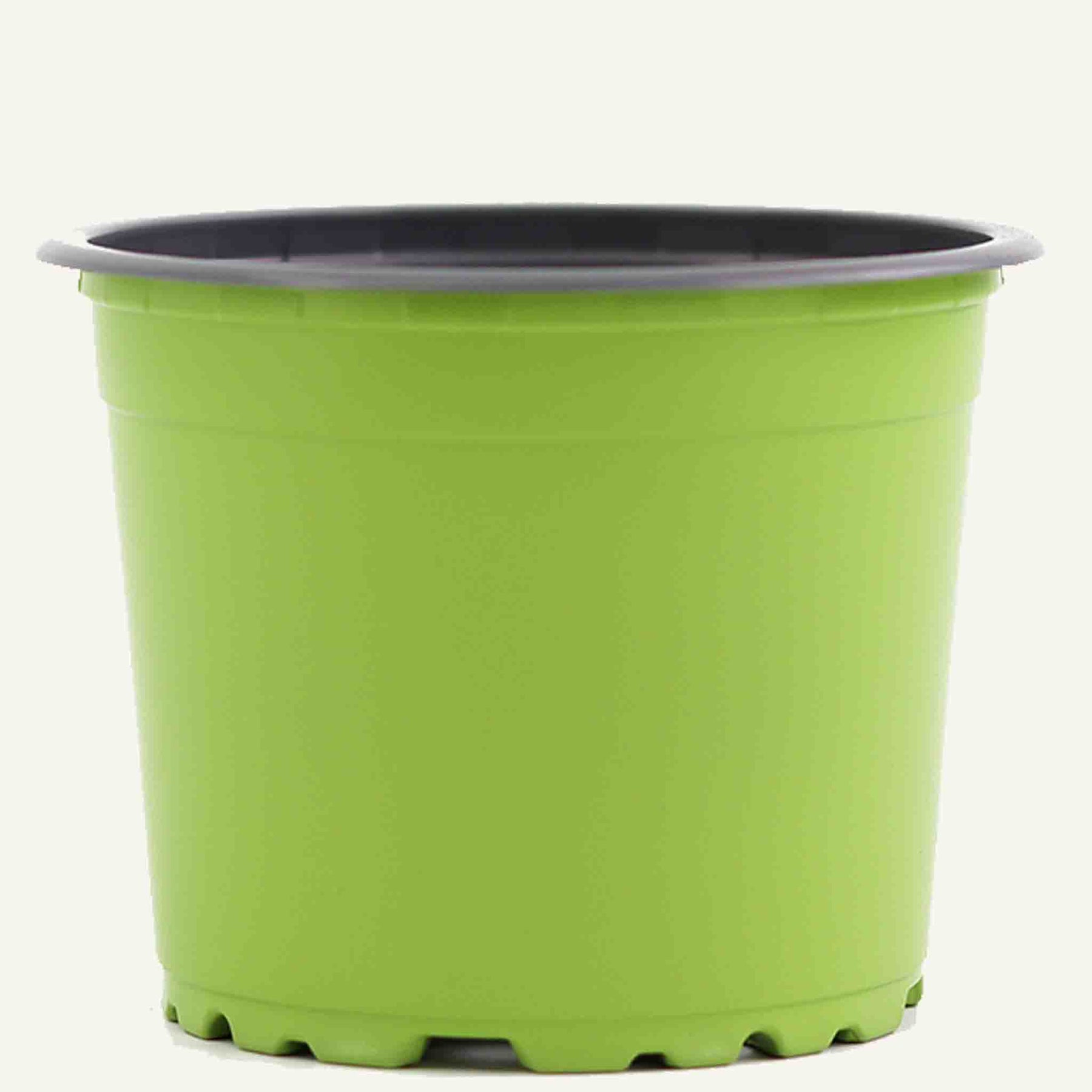
If the pot is differently shaped (Square, oval, e.t.c.), the calculations might not be accurate. You can also check out the plant pots product pages to check their total volume.
Premium SYBASoil
Keeps Alocasia's Happy. Airy & Water retaining, reducing watering needs & dried leaves, helps prevent root rot and replicates its native environment.
In stock
Couldn't load pickup availability
*due to high demand and longer lead times on our new packaging, our previous packaging might be shipped to you. You are still assured of 100% quality SYBASoil!
Using the mix is easy! start with removing as much of the old soil as possible. Gently squeeze the pot while holding it sideways to loosen up the plant. Run the roots under lukewarm tap water to remove the last pieces and bits.
Also, make sure to remove any dead foliage that may still be on the plant using scissors. Now your plant is ready for its fresh Alocasia soil. Add a small layer of Alocasia mix at the bottom of the pot.
Place the plant in the pot, and slowly add Alocasia soil to the sides to fill it up. Make sure that the point where the roots meet the plant is just buried under the Alocasia soil.
Lightly pat the Alocasia mix down into the pot. Make sure to water the Alocasia mix thoroughly after repotting, as this helps settle the mix and roots down.
The alocasia mix has vermiculite instead of the more common perlite. This causes the soil to stay wet for longer. Vermiculite holds moisture very well and releases it back into the soil slowly. This makes it easier to keep your alocasia evenly moist and reduces the time you have to water, leaving you with more time to admire your plant!
Most of Alocasia originates from the southeast of Asia. They are found on forest floors of subtropical & tropical areas. They love high humidity, heat & constantly moist soil that doesn’t dry out. This isn’t to say that they don’t need drainage, their roots still need to breathe well. This alocasia mix mimics that habitat
Tip! As Alocasia likes to stay moist, use a plastic or ceramic pot. Clay & other types of pots are porous, meaning they breathe out moisture. Plastic & ceramic contain moisture better.
Alocasia prefers wet soil, they are part of the aroid family but require a bit more humidity and moisture than aroids like photos, philodendrons & monstera. They prefer bright indirect light, but can’t stand direct sunlight. The main issue with alocasia care is inconsistency in the environment, once they are doing well, try not to change their care around too much.
Unlike most aroids, Alocasia will not benefit from having a moss pole to grow up to. They are self-supporting plants that grow upright.

If the pot is differently shaped (Square, oval, e.t.c.), the calculations might not be accurate. You can also check out the plant pots product pages to check their total volume.
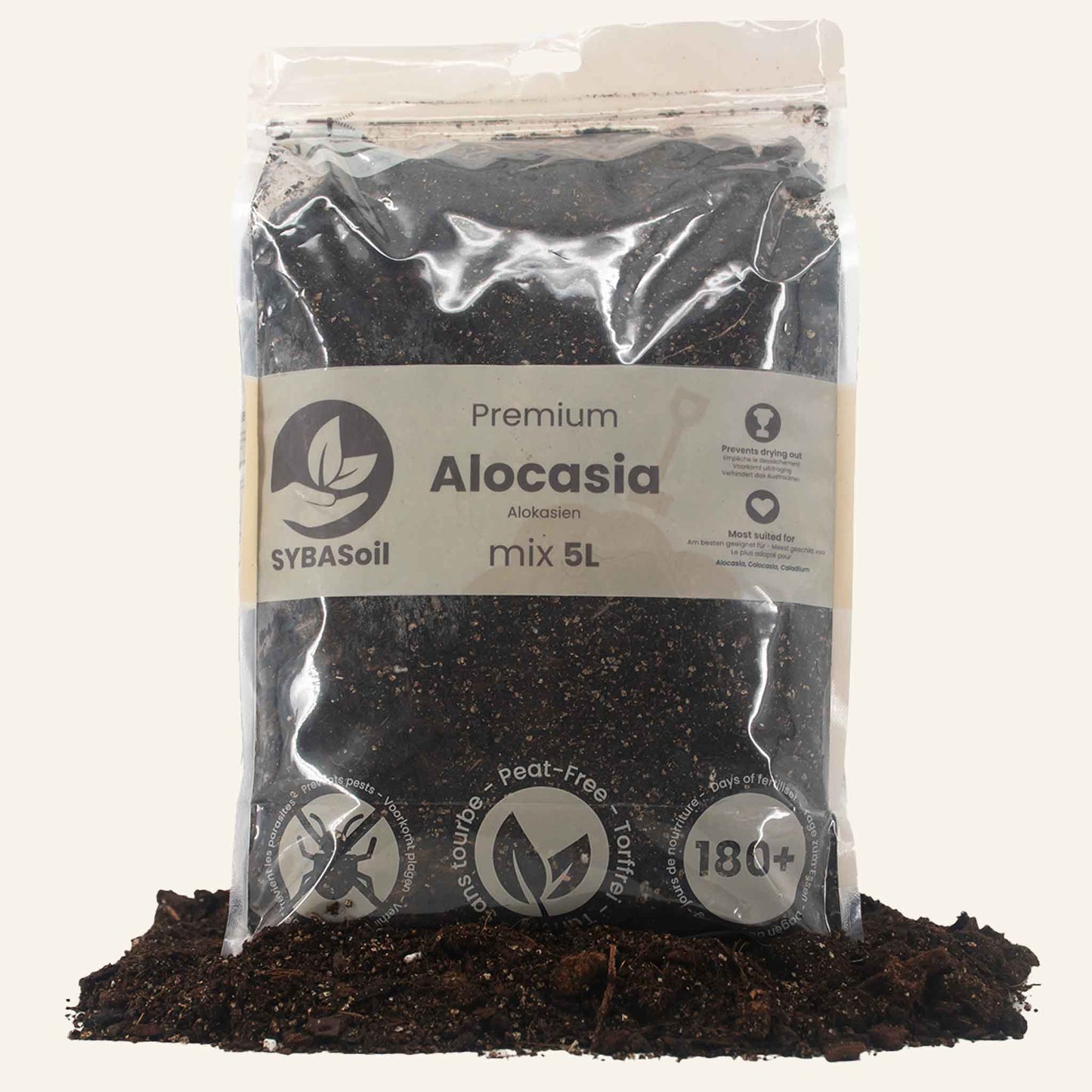
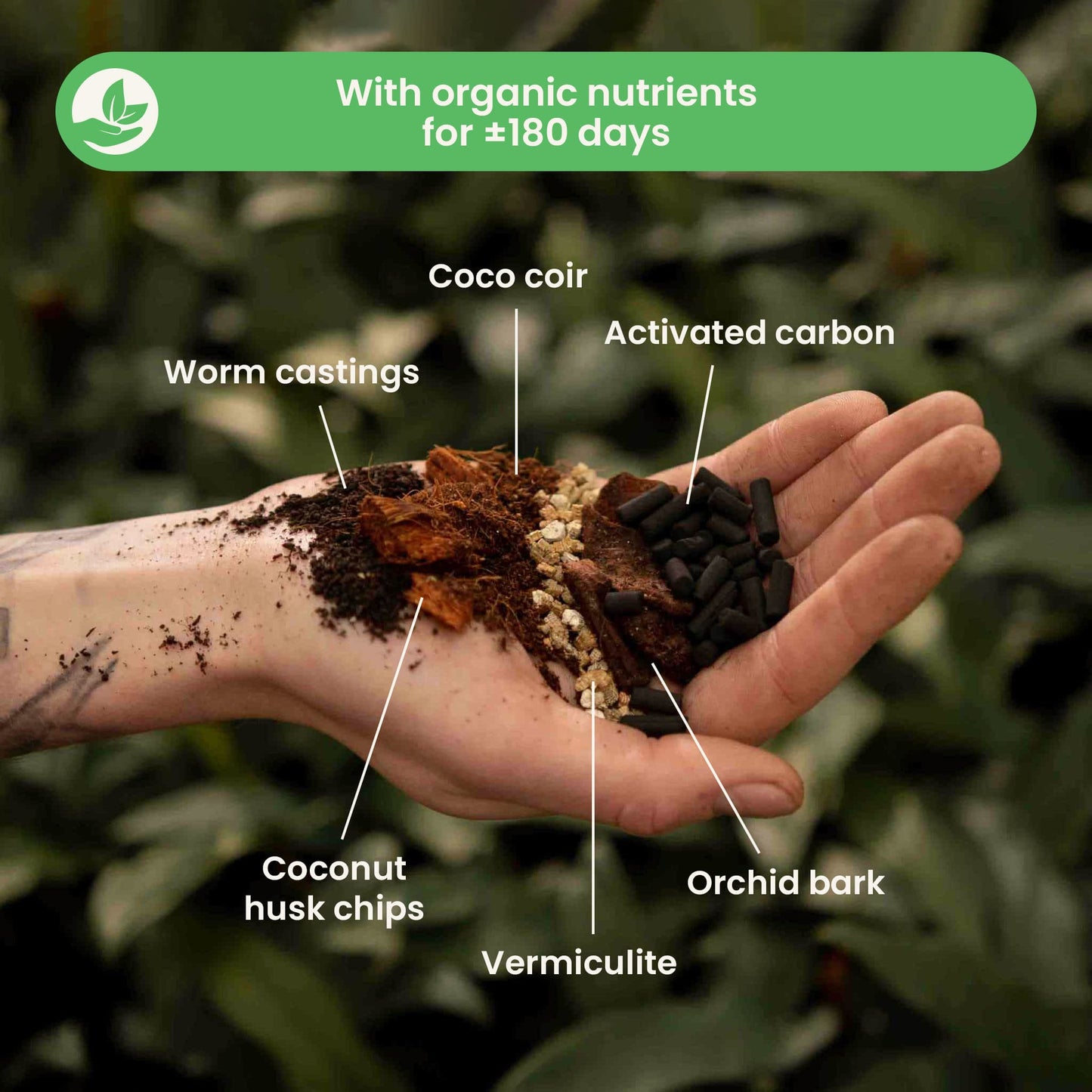
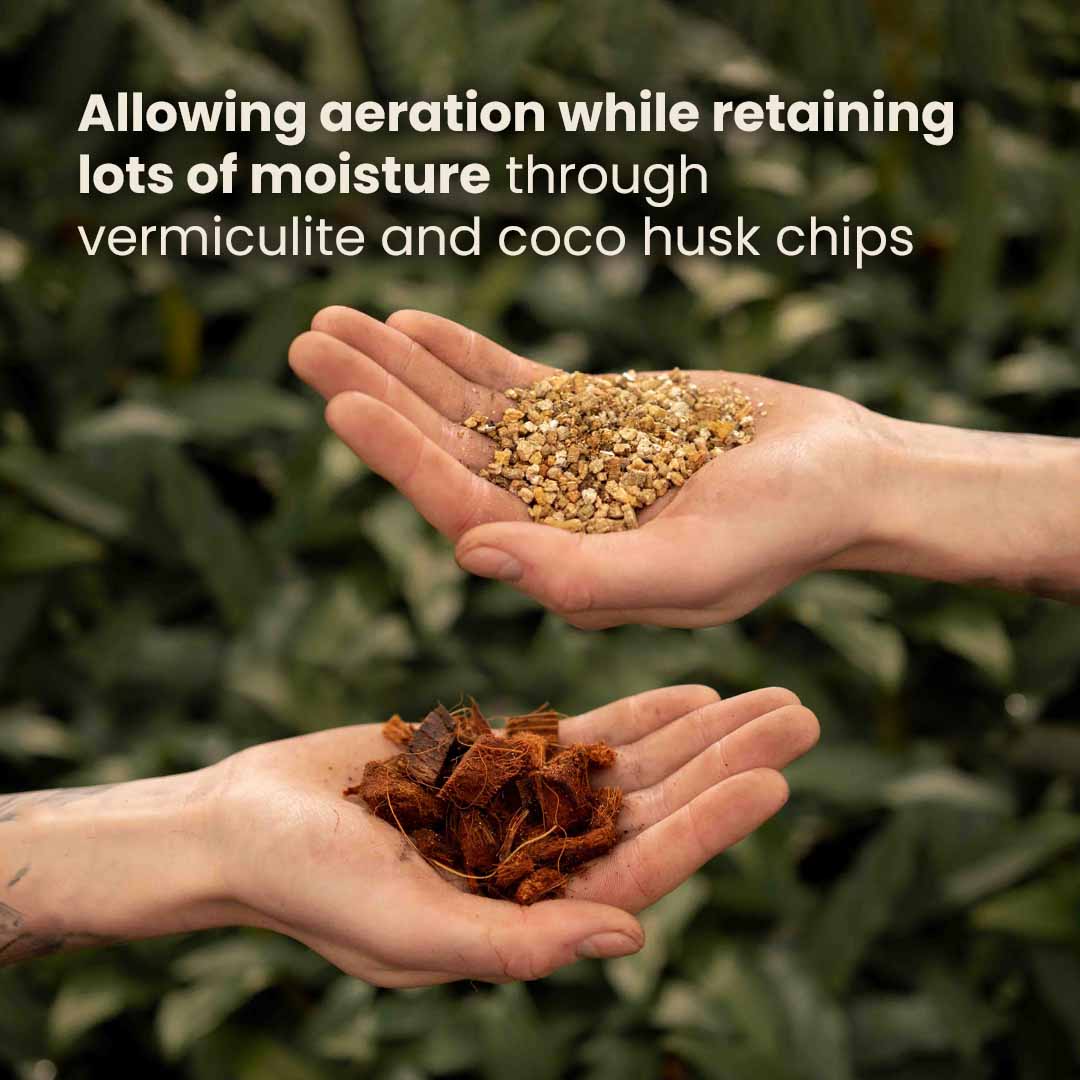
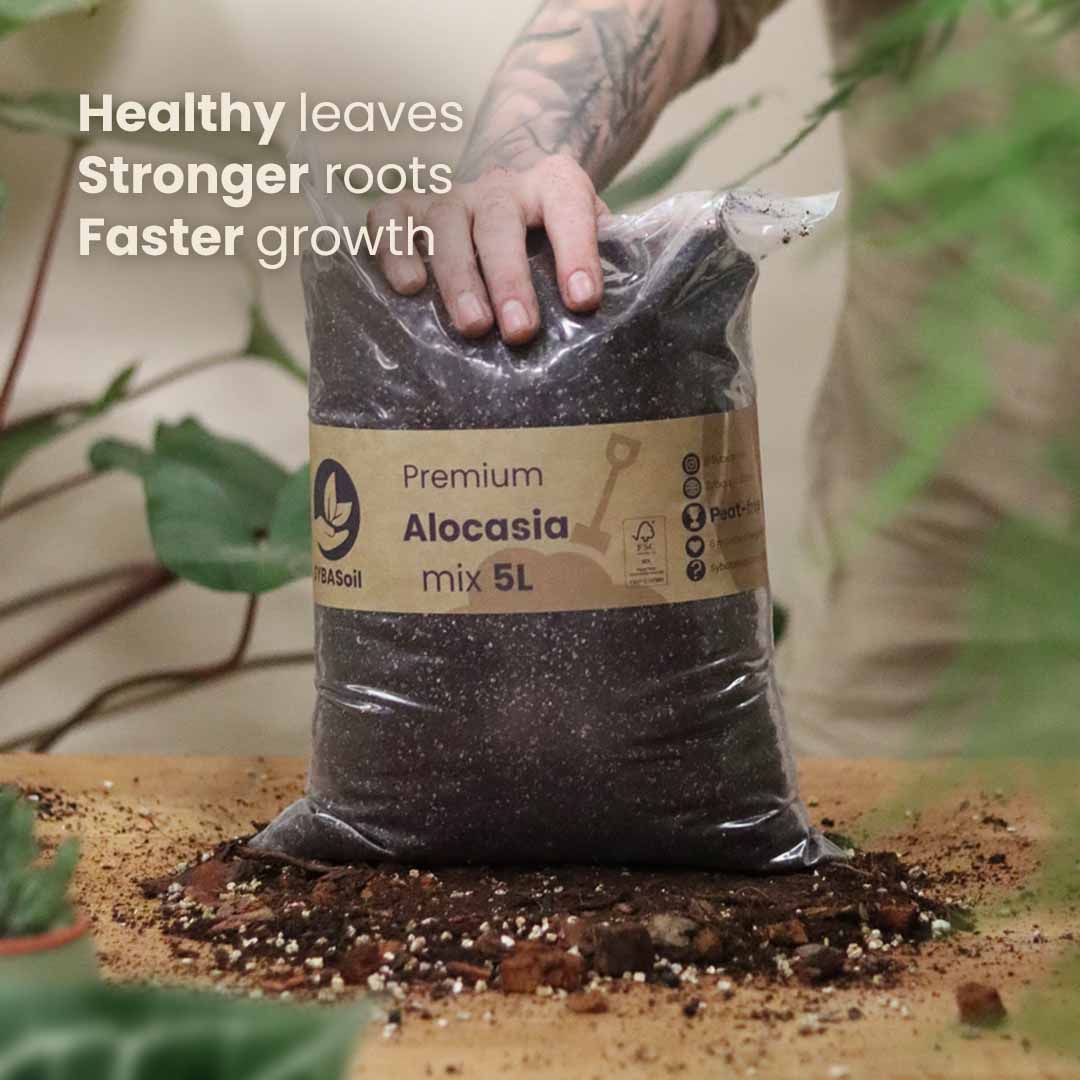
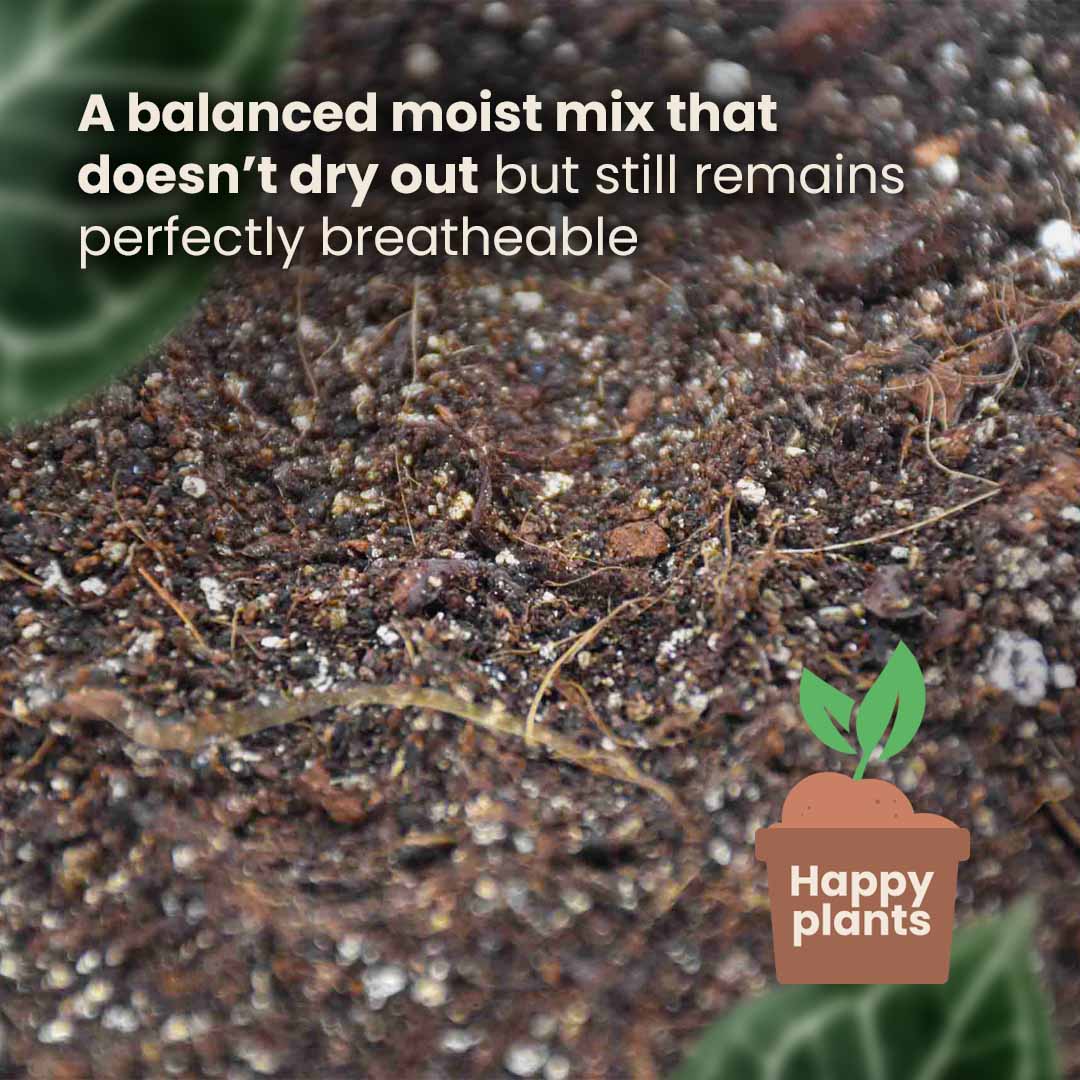
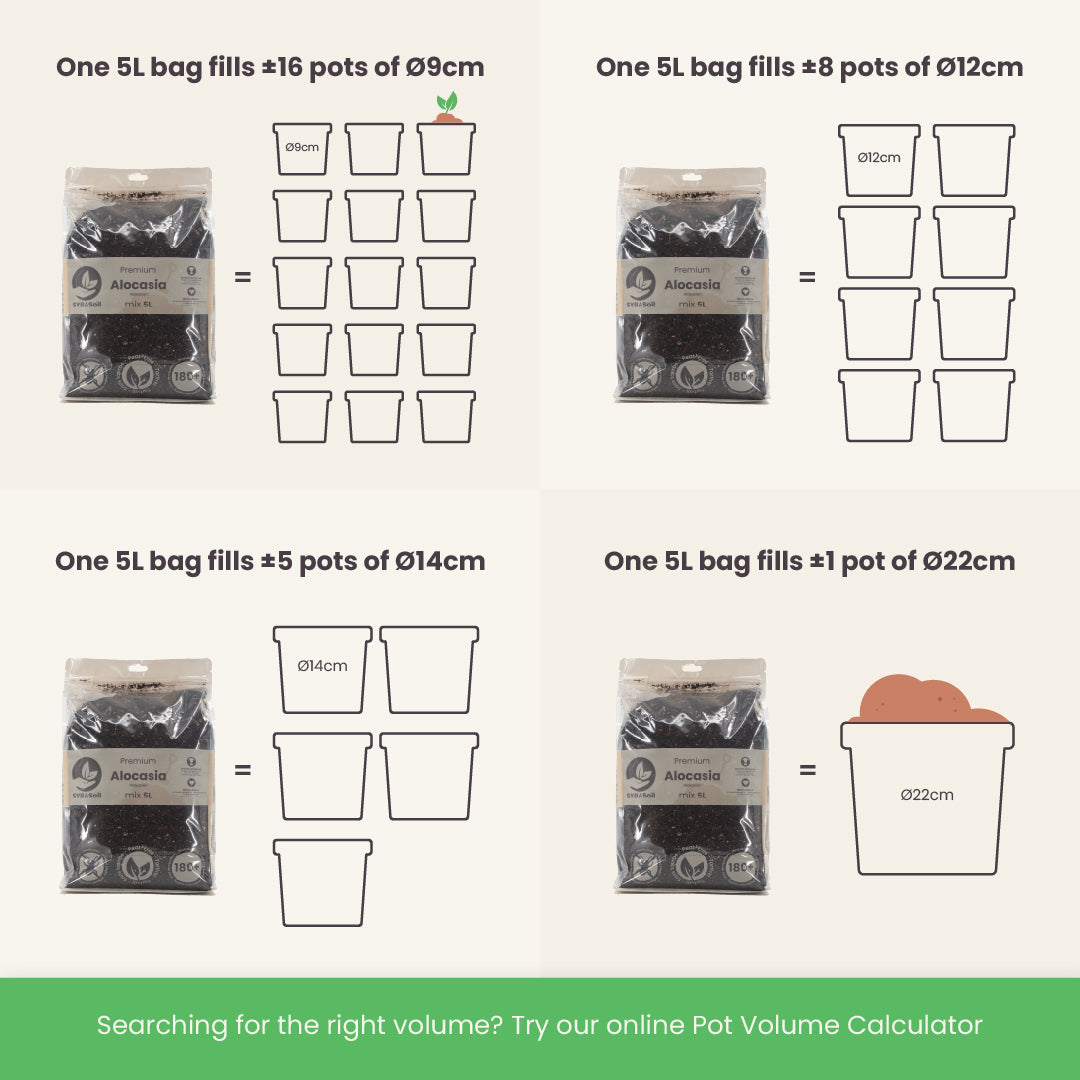
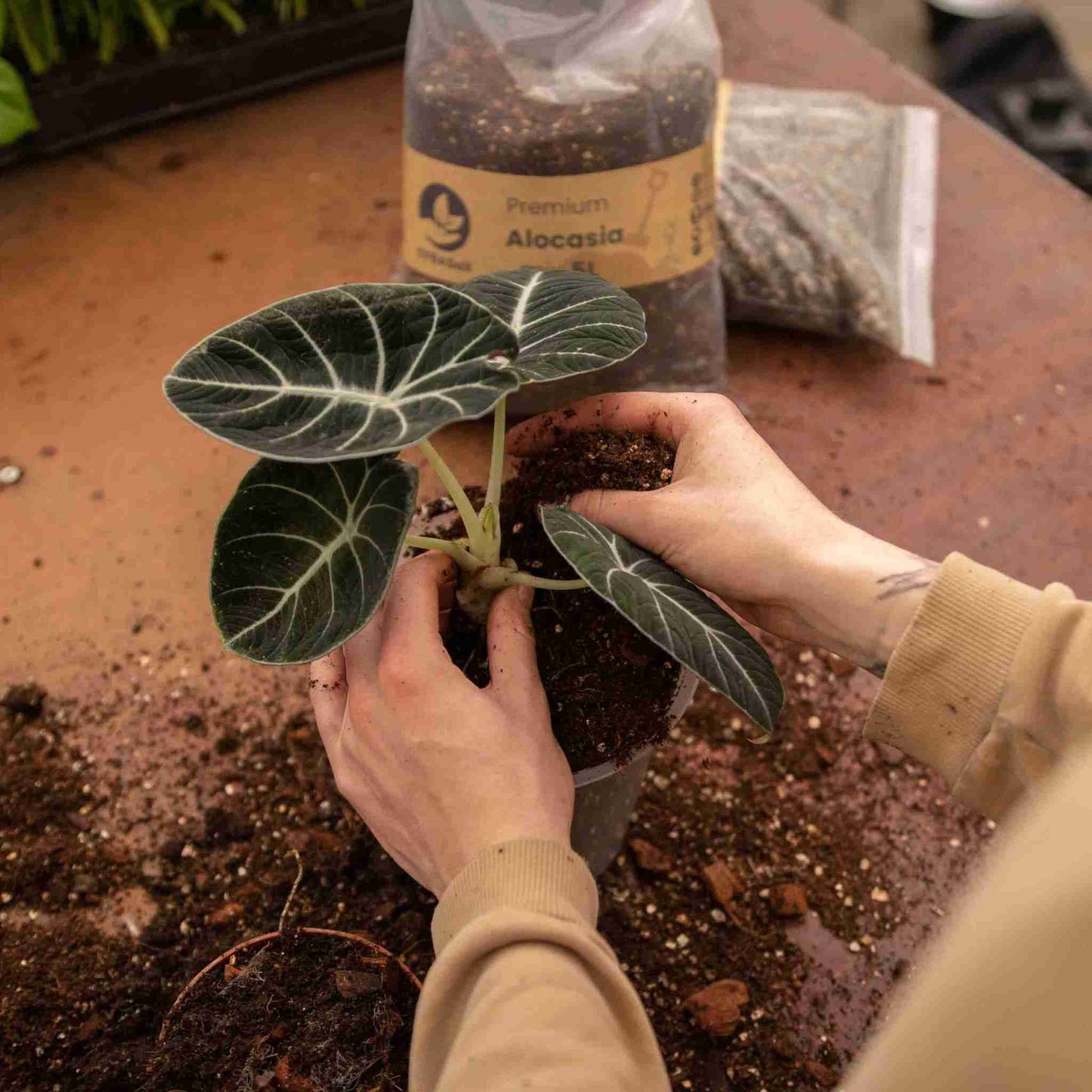
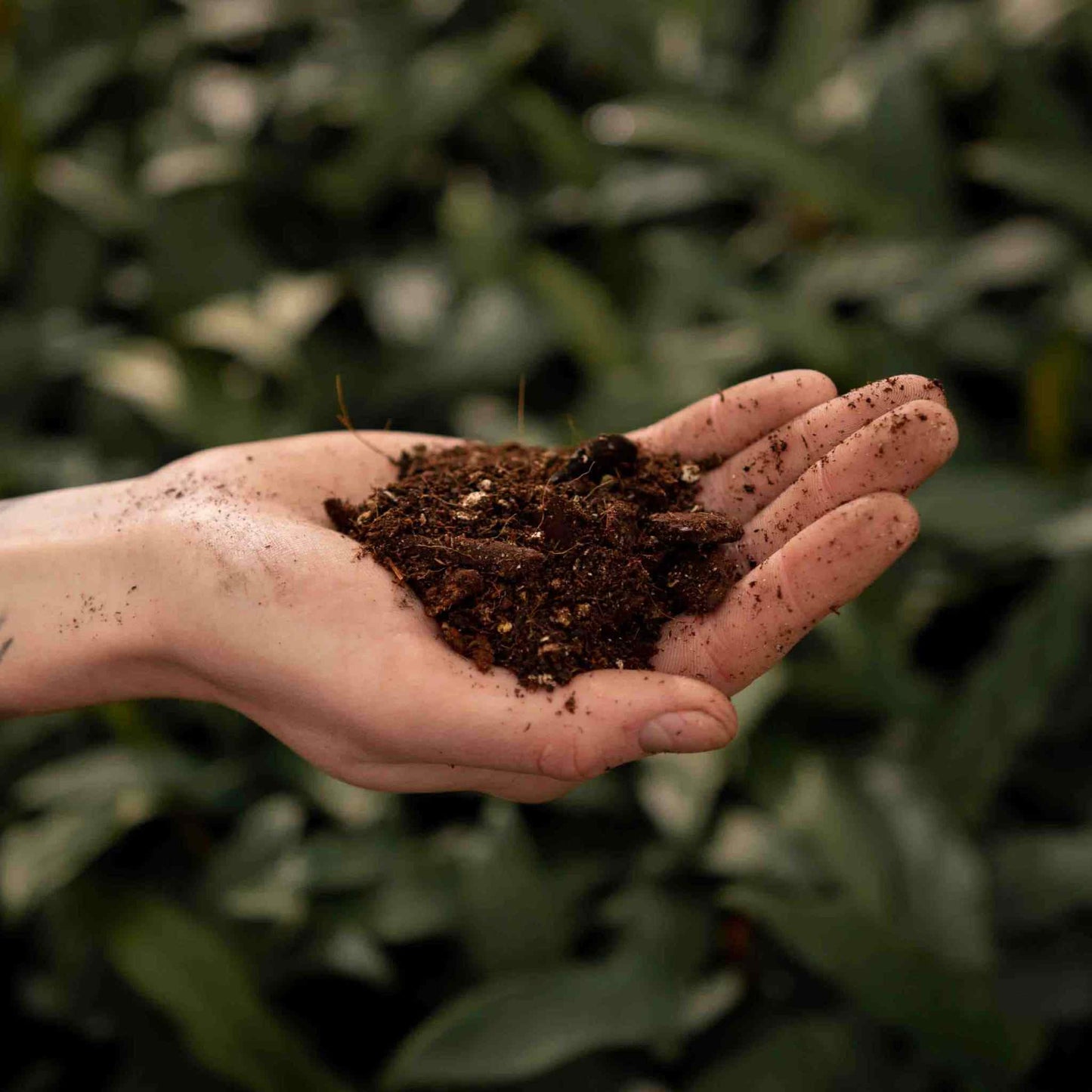
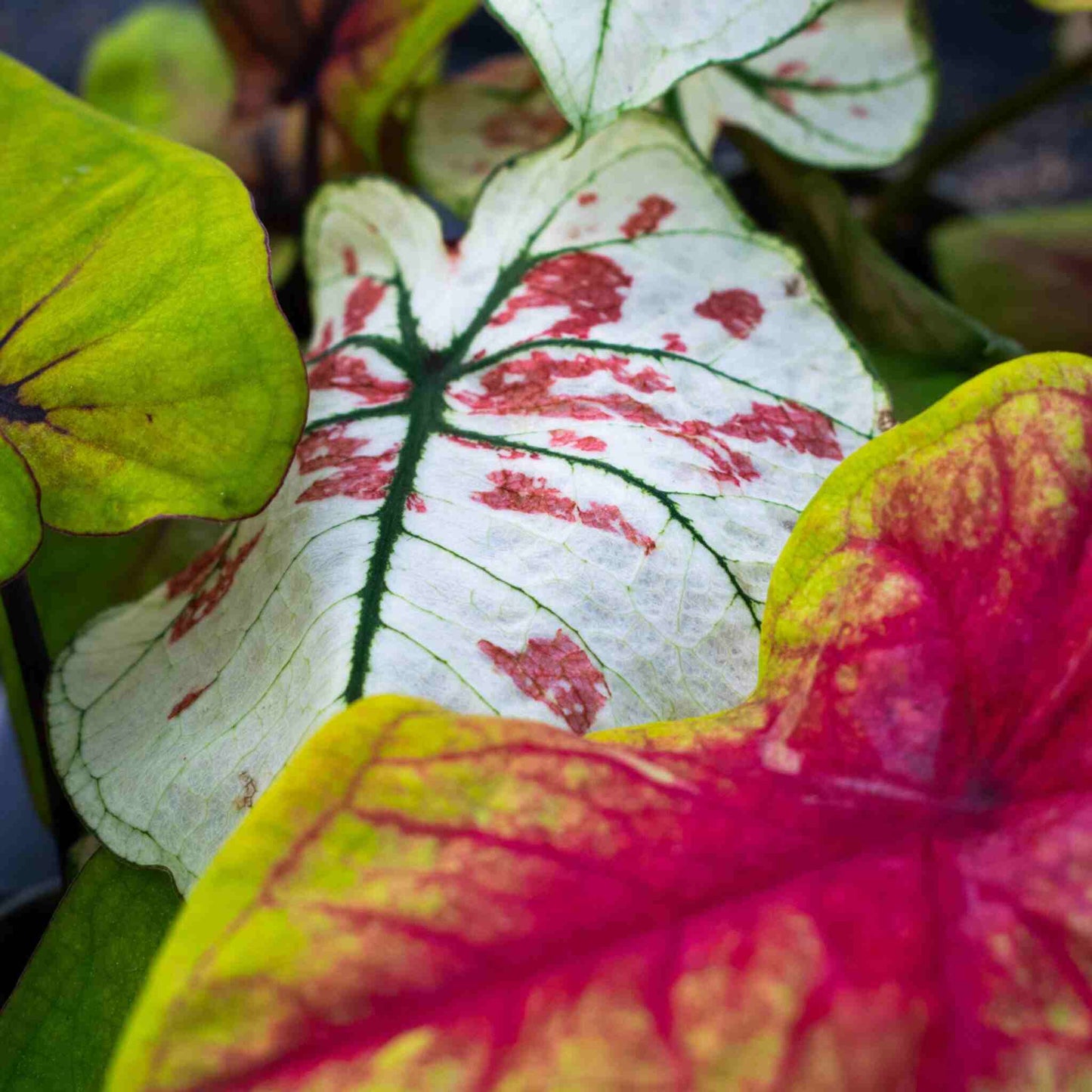
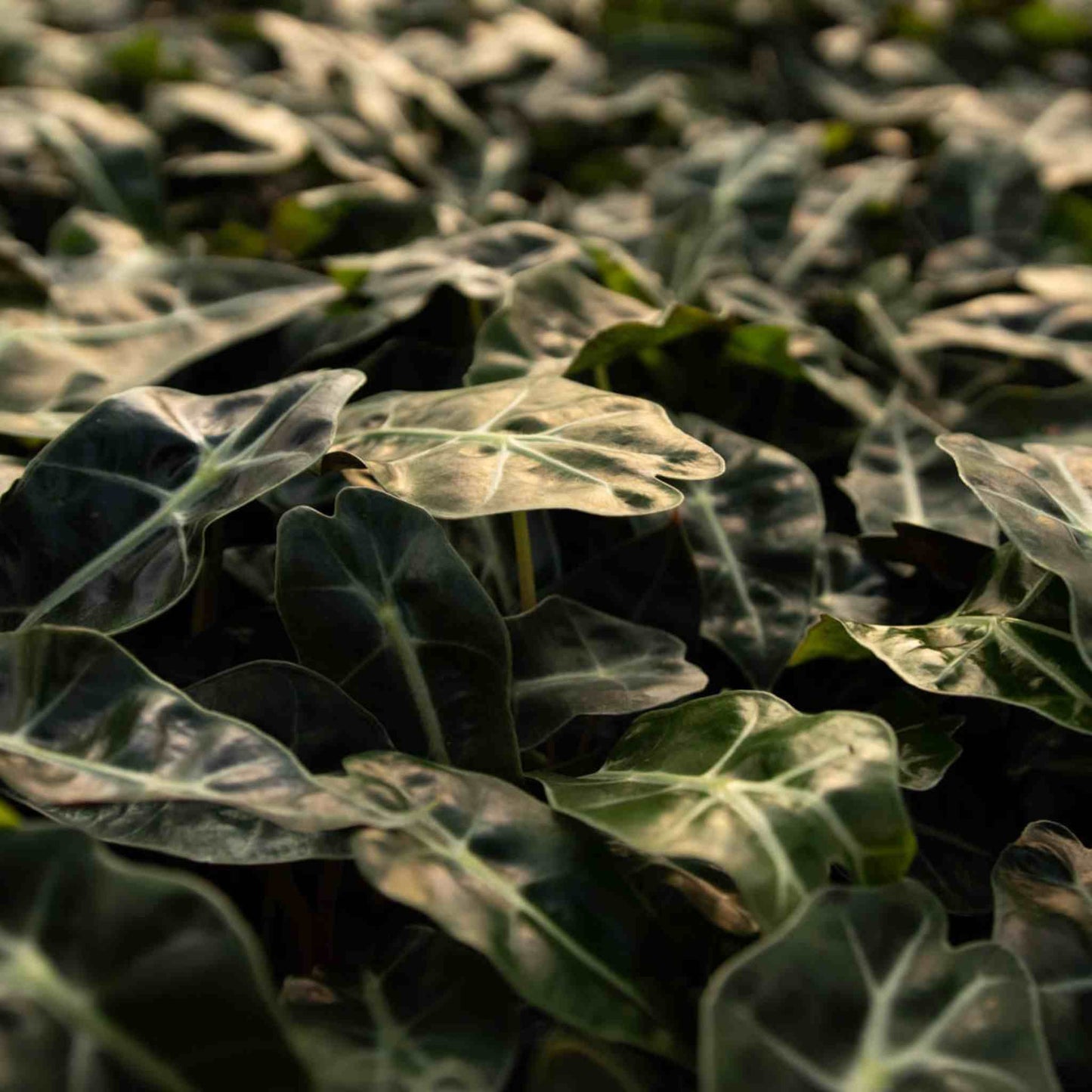
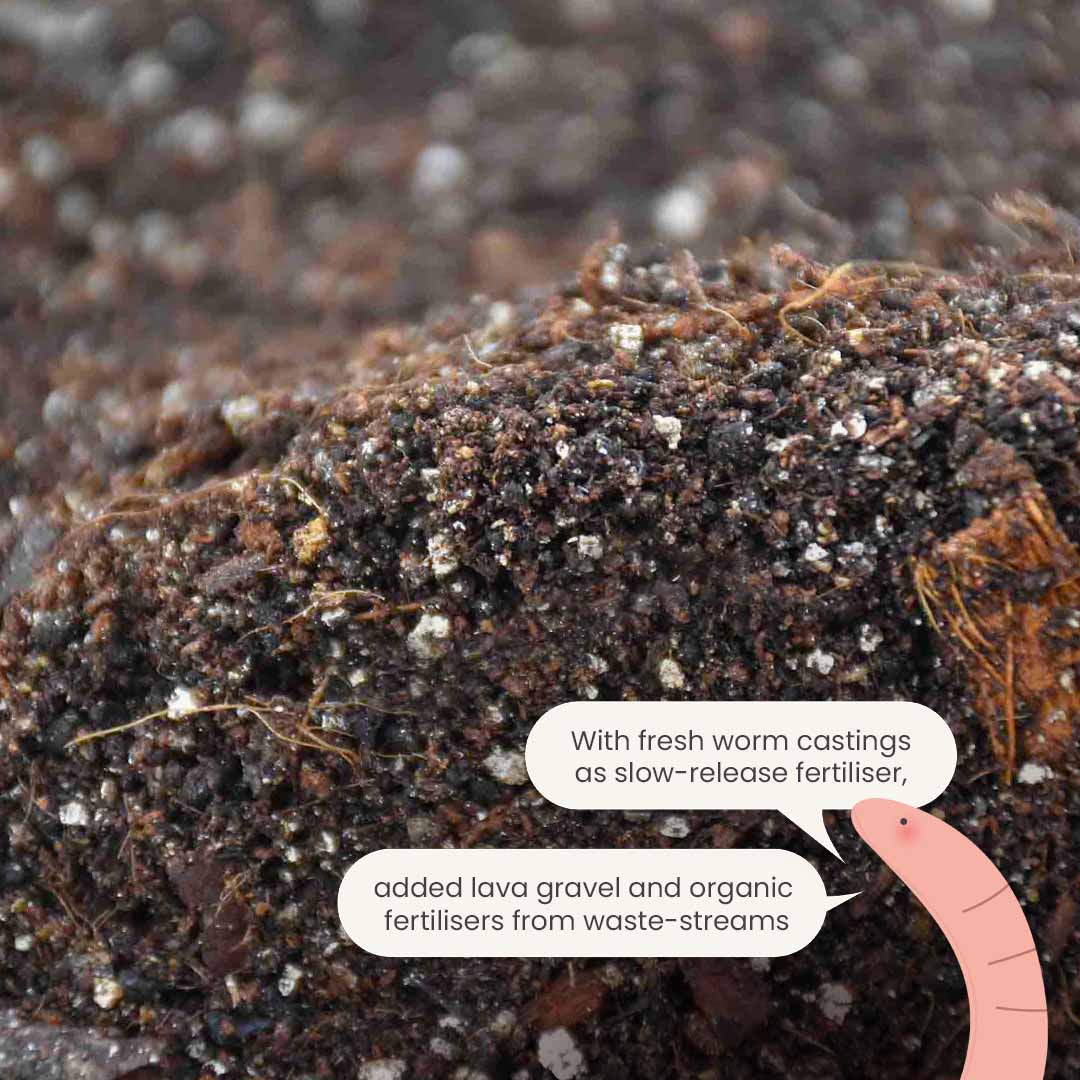
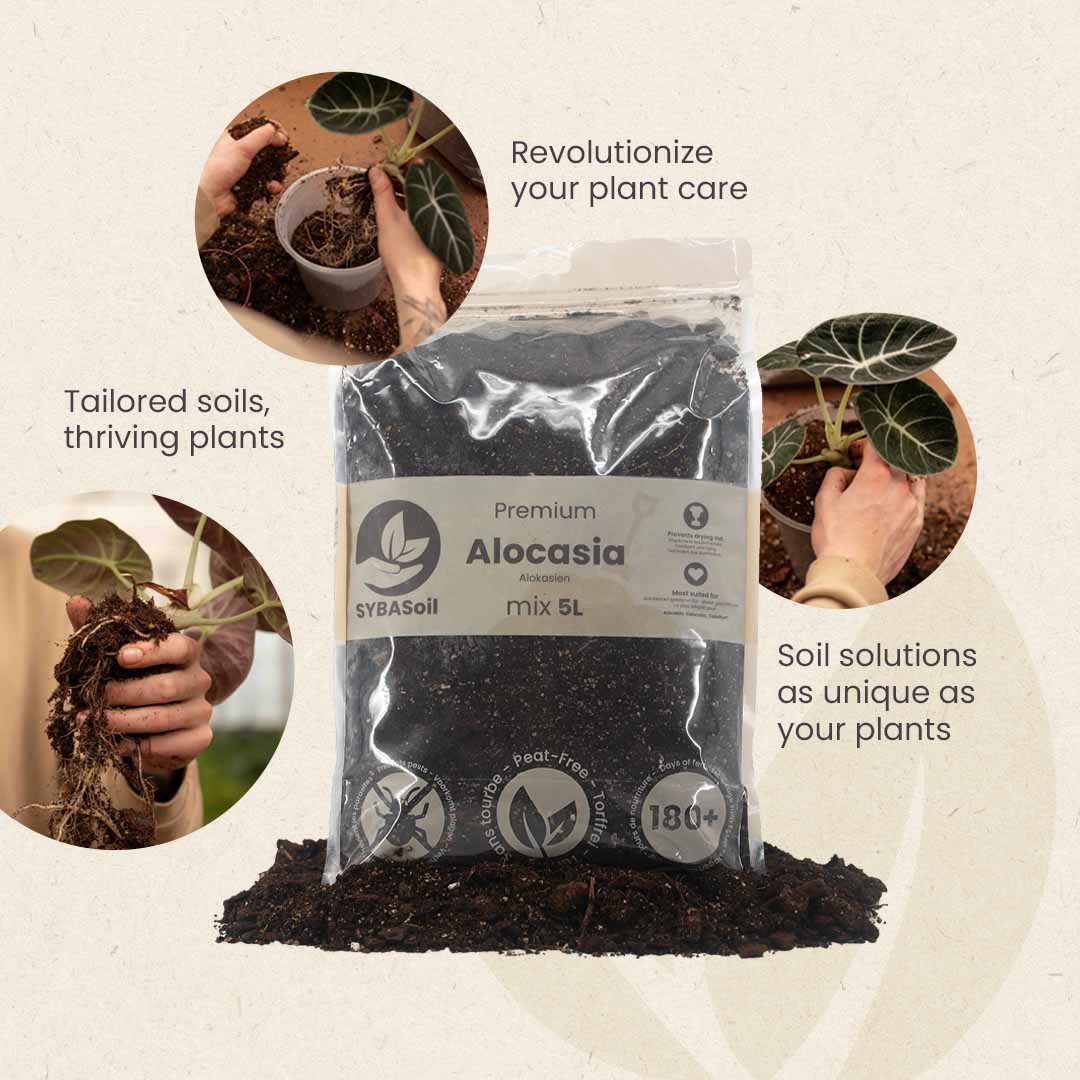
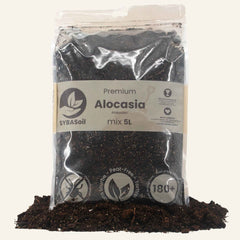
Couldn't load pickup availability
Using the mix is easy! start with removing as much of the old soil as possible. Gently squeeze the pot while holding it sideways to loosen up the plant. Run the roots under lukewarm tap water to remove the last pieces and bits.
Also, make sure to remove any dead foliage that may still be on the plant using scissors. Now your plant is ready for its fresh Alocasia soil. Add a small layer of Alocasia mix at the bottom of the pot.
Place the plant in the pot, and slowly add Alocasia soil to the sides to fill it up. Make sure that the point where the roots meet the plant is just buried under the Alocasia soil.
Lightly pat the Alocasia mix down into the pot. Make sure to water the Alocasia mix thoroughly after repotting, as this helps settle the mix and roots down.
The alocasia mix has vermiculite instead of the more common perlite. This causes the soil to stay wet for longer. Vermiculite holds moisture very well and releases it back into the soil slowly. This makes it easier to keep your alocasia evenly moist and reduces the time you have to water, leaving you with more time to admire your plant!
Most of Alocasia originates from the southeast of Asia. They are found on forest floors of subtropical & tropical areas. They love high humidity, heat & constantly moist soil that doesn’t dry out. This isn’t to say that they don’t need drainage, their roots still need to breathe well. This alocasia mix mimics that habitat
Tip! As Alocasia likes to stay moist, use a plastic or ceramic pot. Clay & other types of pots are porous, meaning they breathe out moisture. Plastic & ceramic contain moisture better.
Alocasia prefers wet soil, they are part of the aroid family but require a bit more humidity and moisture than aroids like photos, philodendrons & monstera. They prefer bright indirect light, but can’t stand direct sunlight. The main issue with alocasia care is inconsistency in the environment, once they are doing well, try not to change their care around too much.
Unlike most aroids, Alocasia will not benefit from having a moss pole to grow up to. They are self-supporting plants that grow upright.
Helps prevent mould & root-rot
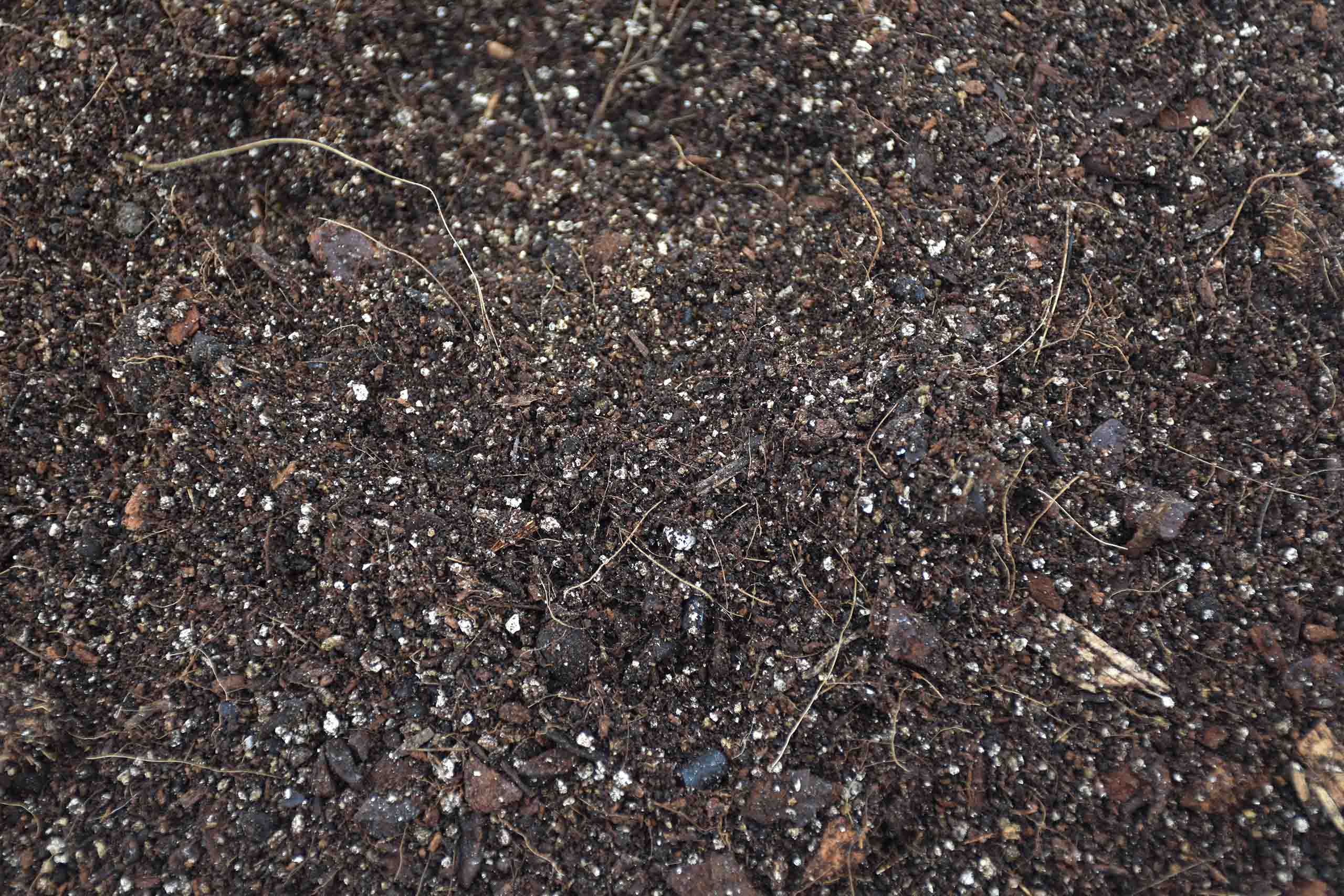

Designed to make your plant-care easier
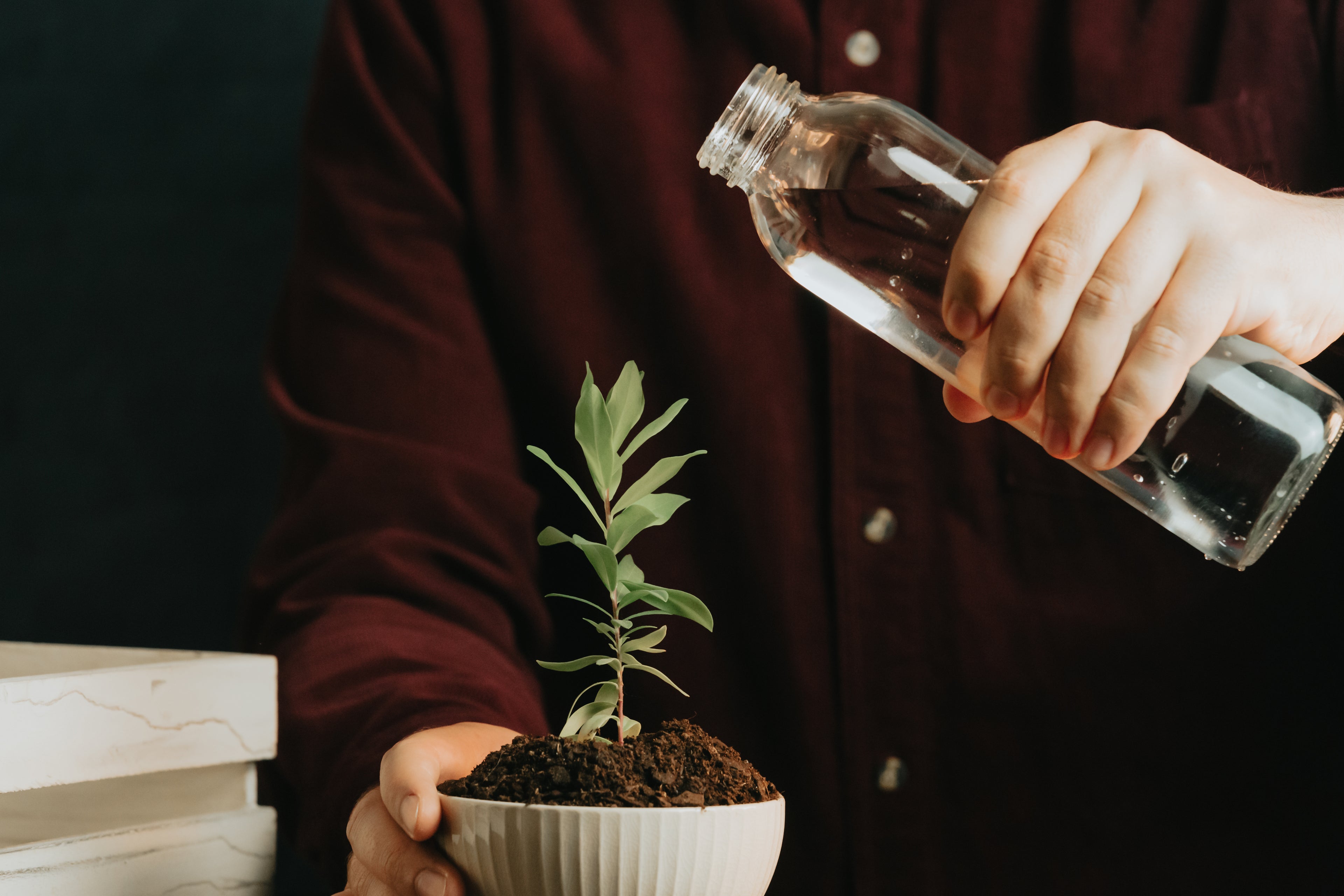

Soil to make your Alocasia's happy!
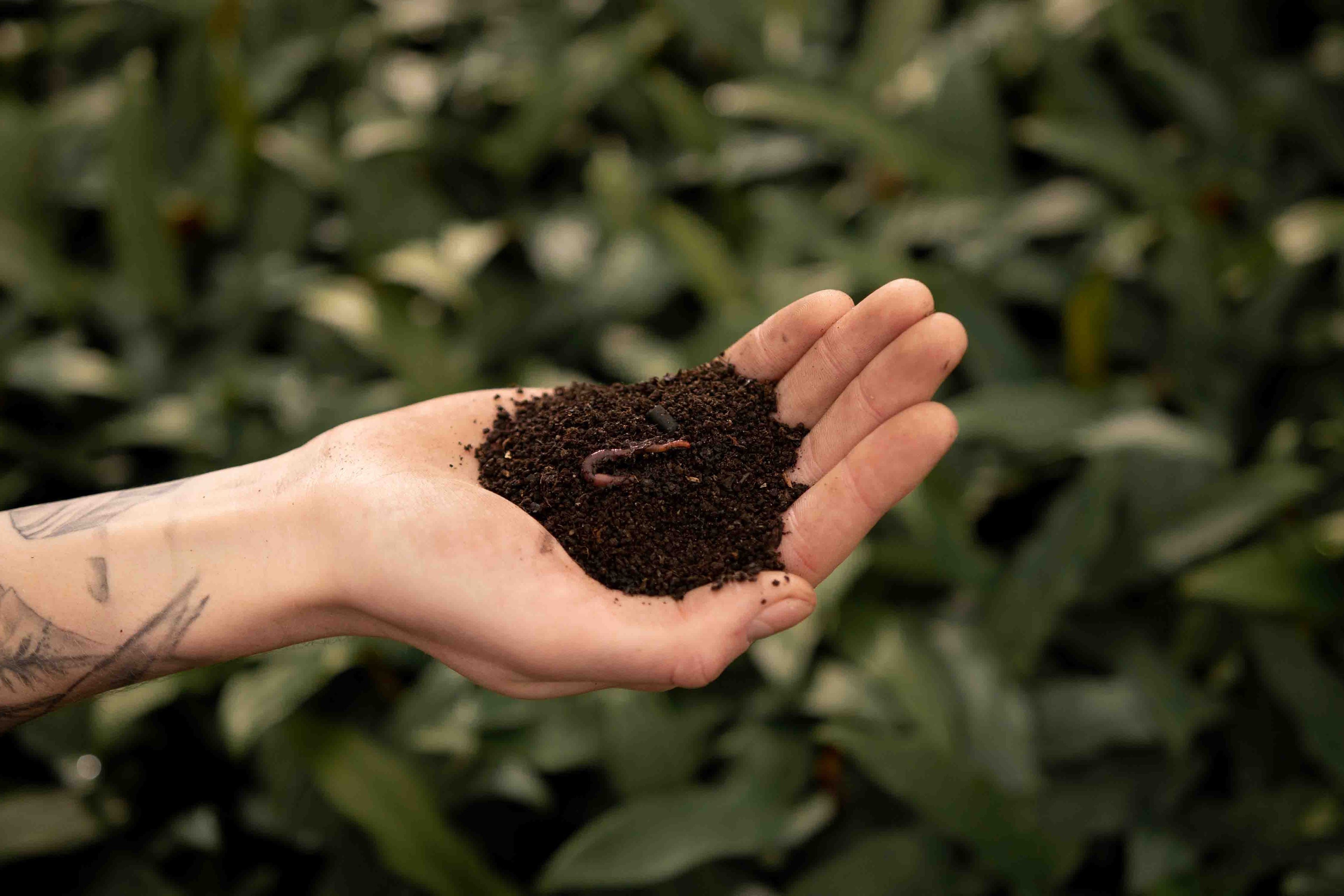

Good for your plants & nature!
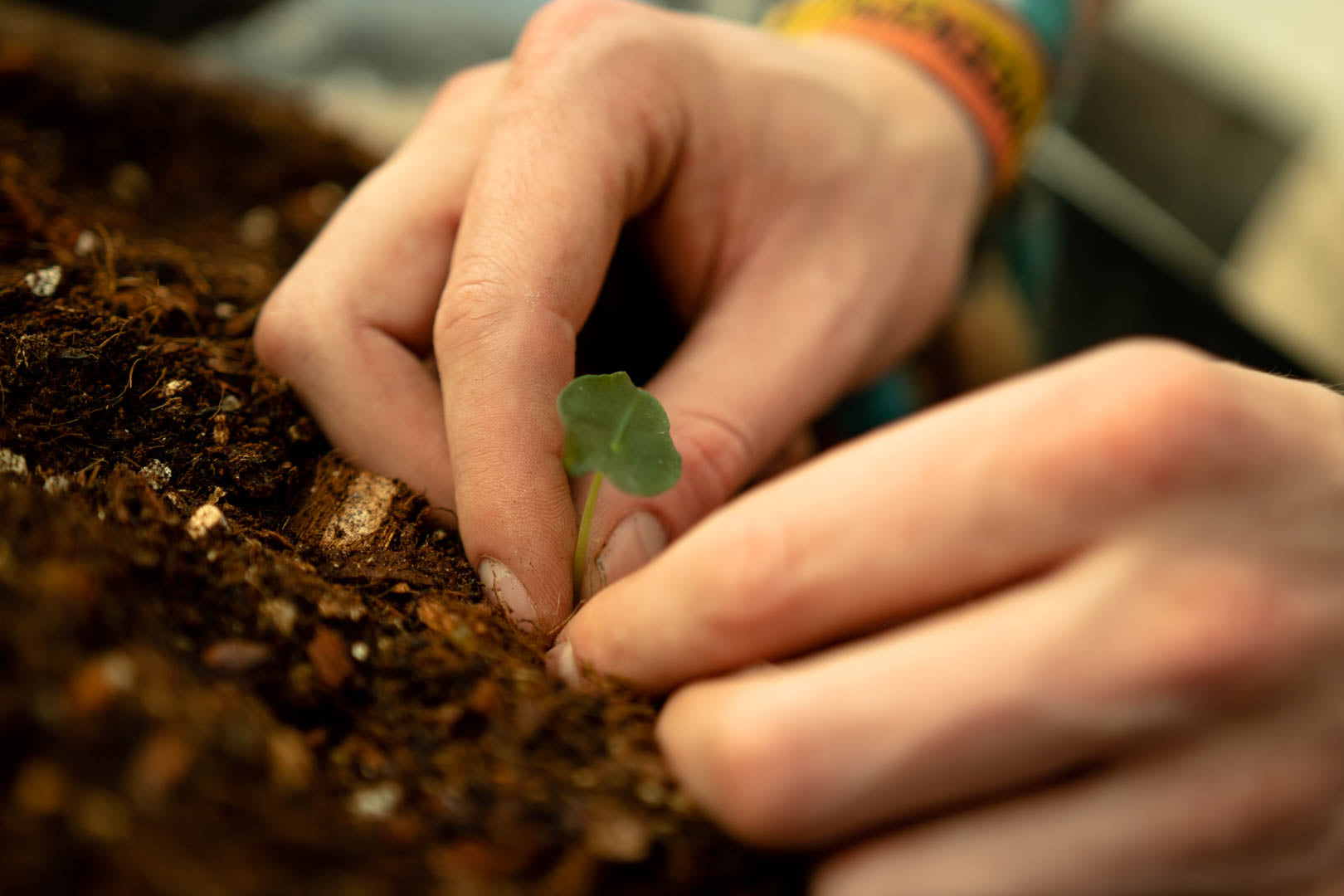

Check out the SYBASoil Guide
Check out this pot volume calculator tool to calculate how much Alocasia mix you need.
The nutrients in SYBASoil will run out in ~6 months on average. We recommend refeeding by removing the top part of the soil and adding 10-20% of the volume with fresh worm castings.
You can store SYBASoil for about 2 years. Make sure to store it cool, dark and closed off. The effectiveness of the nutrients can degrade over the years. Simply add some fresh worm castings to give the soil new life.
We recommend repotting once any of these things happen:
- You see roots growing out of the bottom of the pot
- The soil dries very quickly between watering
- The plant is top-heavy and wants to fall over
- Roots are pushing the plant up and out of the container
- Every 1 to 2 years
Our packaging can be recycled at your local plastic recycling facility.
You can also re-use it for storage, or leave a little soil and use it as a propagation box!
Water only when the top 2-3cm of the soil is dried out. You can test this out by poking your finger in the soil to feel around.
Do not forget to keep the soil moist! If the soil dries out completely the plant will suffer
Zeer tevreden over de potgronden!
Eerst gezaaid in sphagnum mos .
Na een paar weken waren de zaadjes gekiemd . Als het eerste blaadje tevoorschijn kwam , overgeplant in Alocasia mix . De plantjes doen het ongelofelijk.
Groeien snel .( reuze Alocasia/ Alocasia robusta )
Habe erst letztens umgetopft....finde, die Erde hat eine gute Struktur....leider habe ich mit Alocasien immer nicht soviel Glück, die neigen bei mir zum eingehen, Wachstumstillstand, braune Blätter...was nichts mit der Erde zu tun hat....vielleicht haben die Profis noch paar Tipps für mich!
Ich bin wirklich sehr zufrieden mit der ganzen Abwicklung und dem Produkt. Habe bereits das zweite mal bestellt und werde es bei Bedarf wieder tun. Super Zusammensetzung des Erdmixes. Meine Pflanzen lieben es. Alles mit sehr viel Liebe fürs Detail. Danke!
Hele goede grond voor mijn alocasia's. Mijn planten zijn er erg blij mee! De grond is goed verpakt en snel geleverd!
Première commande pour rempotage de mon alocasia, rien a dire, livraison rapide et substrat de qualité et adapté aux besoins de am plante. Parfait!
Top Erde für meine Polly 😊
Order before 16:30 on working days = Shipped today
The expert in soil
100% Satisfaction Guarantee
